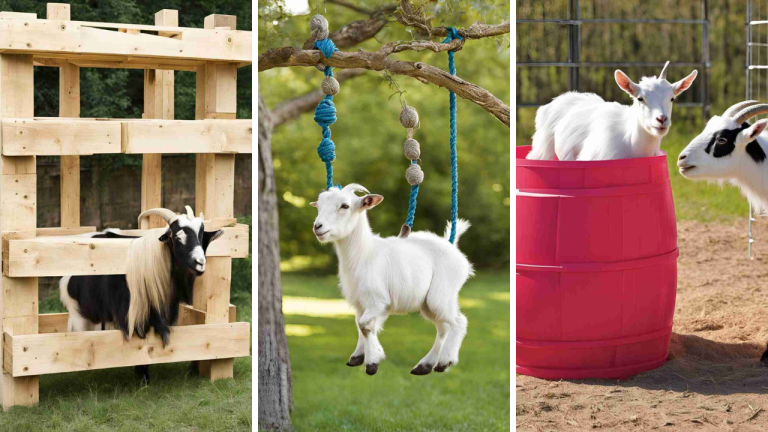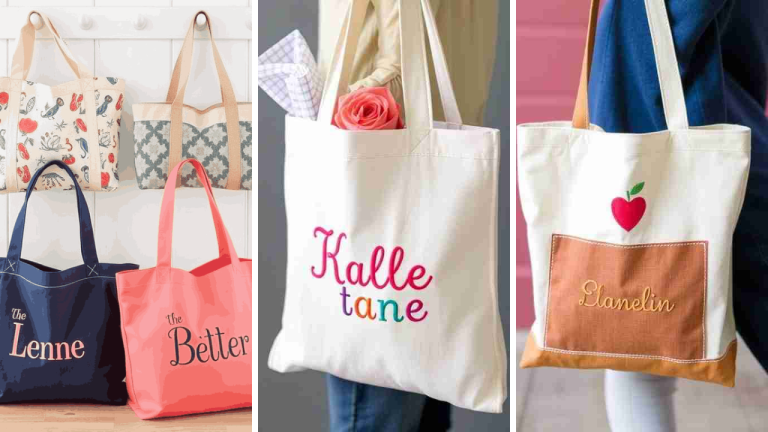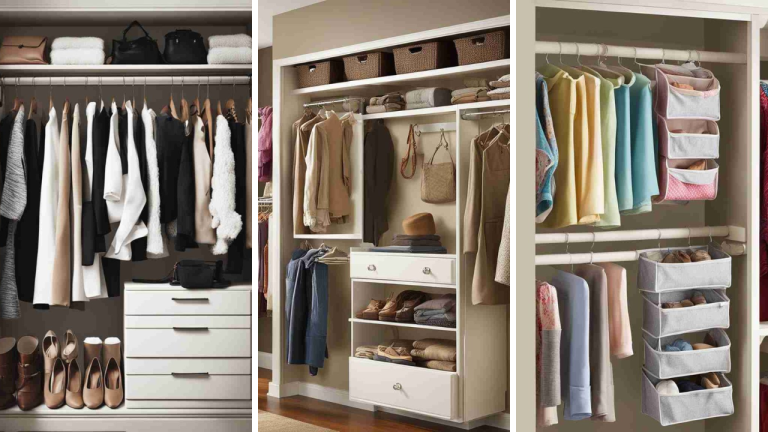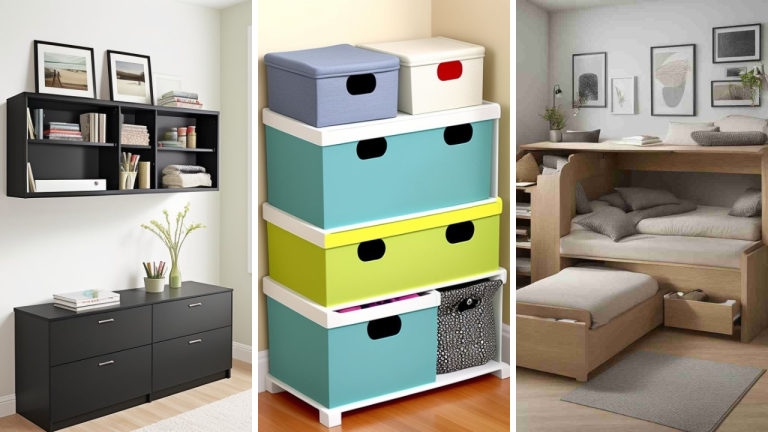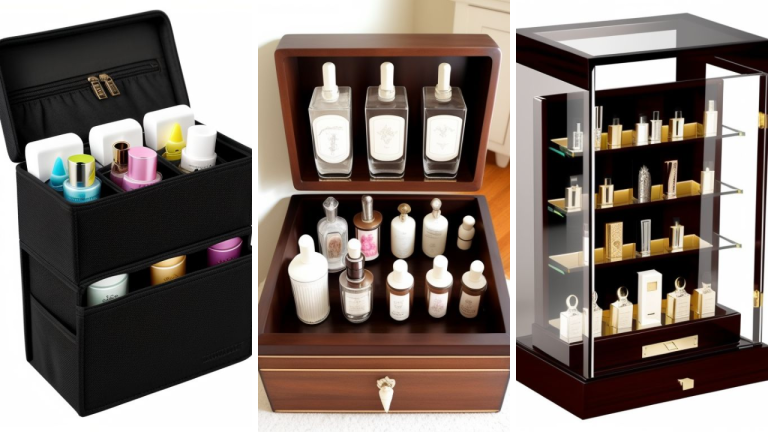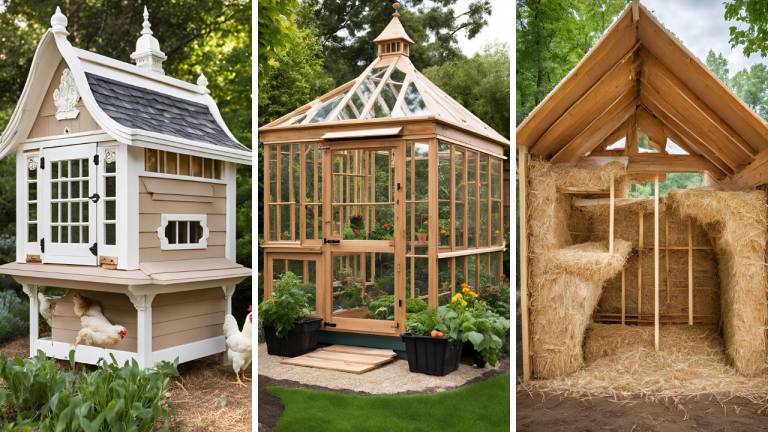Concrete floors are one of the most versatile, affordable, and trendy options for home updates. Whether you’re looking to add a touch of elegance or inject some personality into a space, DIY concrete floors provide endless opportunities for creativity. They can be customized with various textures, colors, and finishes to perfectly match your style.
In this guide, we’ll walk you through 27 innovative concrete floor ideas that you can try yourself, even if you’re a beginner. If you’re considering updating your floors, here’s the first part of our list that’ll inspire you to take on the challenge.
1. Polished Concrete Floors
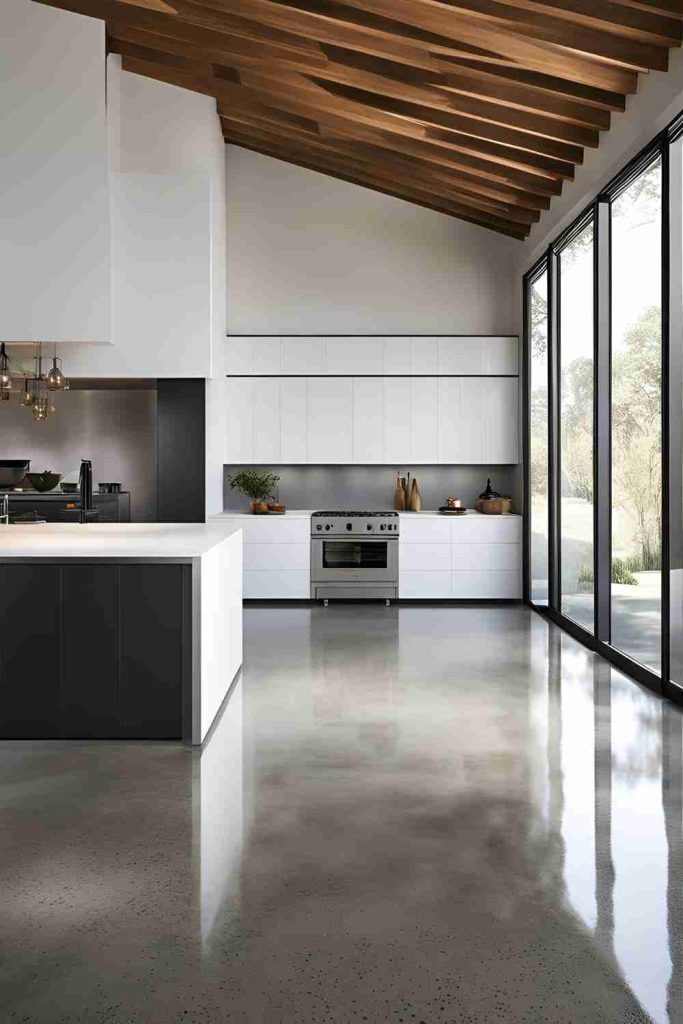
Polished concrete floors are sleek, durable, and timeless. They’re perfect for creating a modern look in kitchens, living rooms, or even bathrooms. The process of polishing involves grinding down the surface of the concrete until it reaches a smooth and shiny finish. It’s an excellent choice for those who appreciate clean lines and minimalist design.
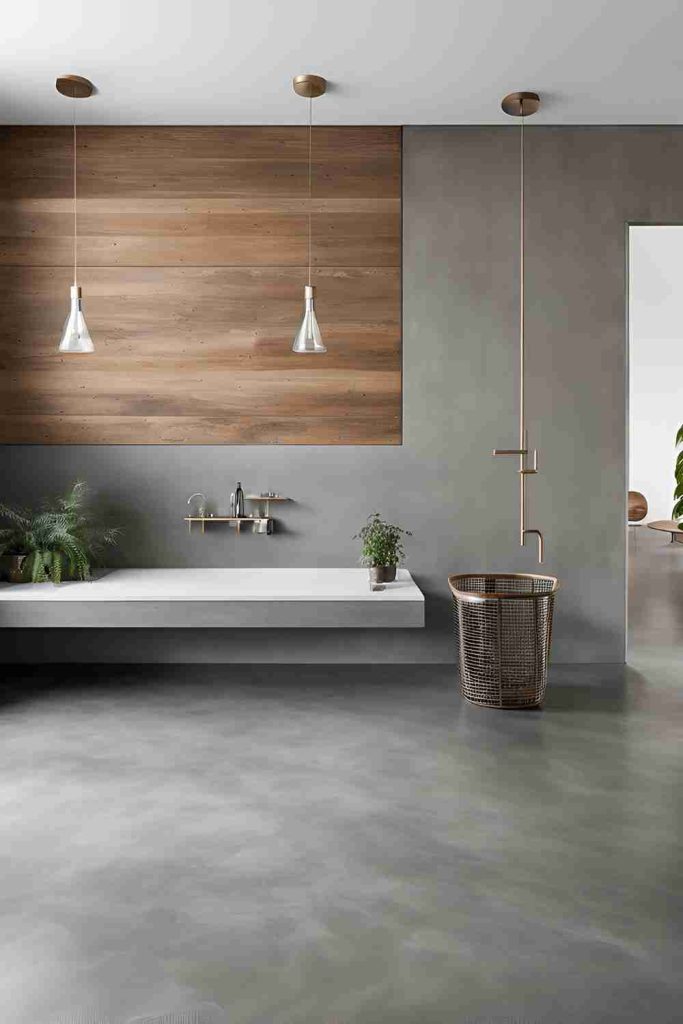
To create polished concrete floors, you’ll need a grinder with diamond polishing pads. Start with a coarse grit to remove any imperfections, then gradually work your way to a finer grit for a mirror-like finish. Polishing can be done in multiple stages, so take your time and make sure you achieve the desired gloss level.
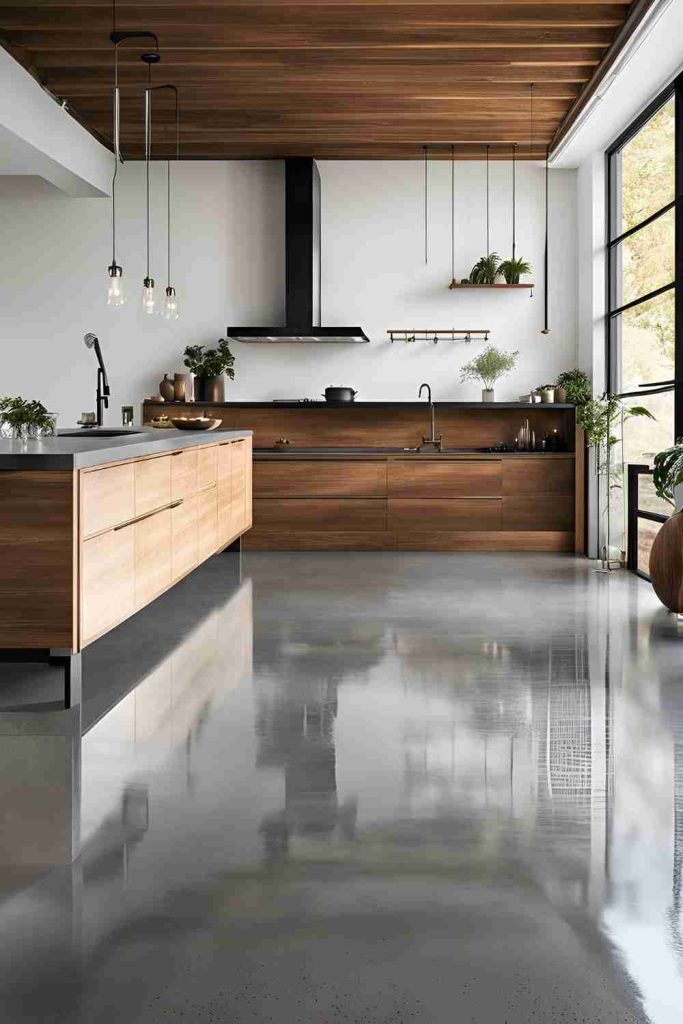
Aside from its beauty, polished concrete is incredibly low-maintenance and easy to clean. It’s ideal for high-traffic areas where you want a long-lasting floor that still looks stunning year after year.
2. Stained Concrete for a Marble-Like Finish
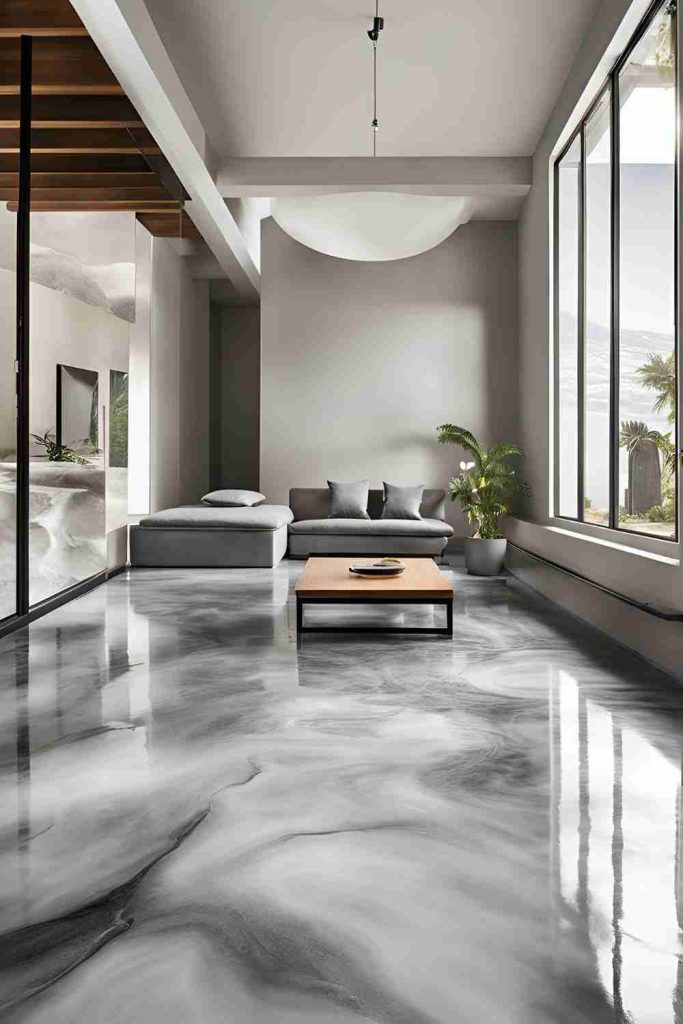
If you’ve ever dreamed of having a marble floor but balked at the hefty price tag, stained concrete is your perfect solution. Concrete stains can mimic the look of luxurious marble without breaking the bank. The best part? You can choose from a variety of shades, including veined and swirling effects that resemble natural stone.
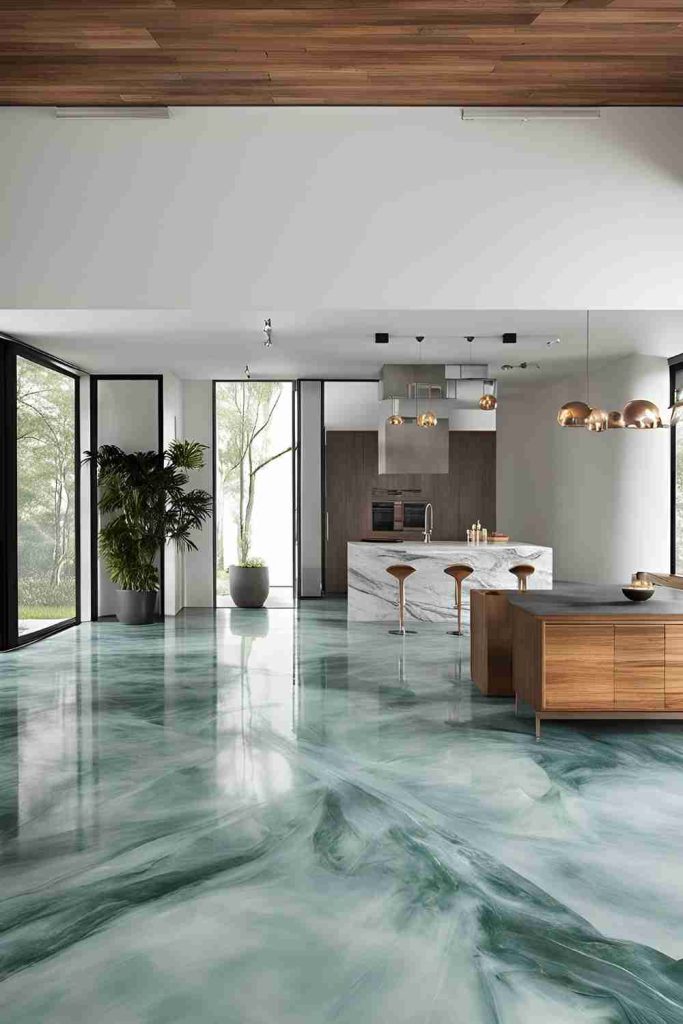
To achieve a marble-like finish, you’ll need acid-based or water-based concrete stain. Apply the stain with a sprayer or sponge and use a brush to create delicate veins or patterns. You can even mix different stains to achieve a more dynamic, marbleized look.
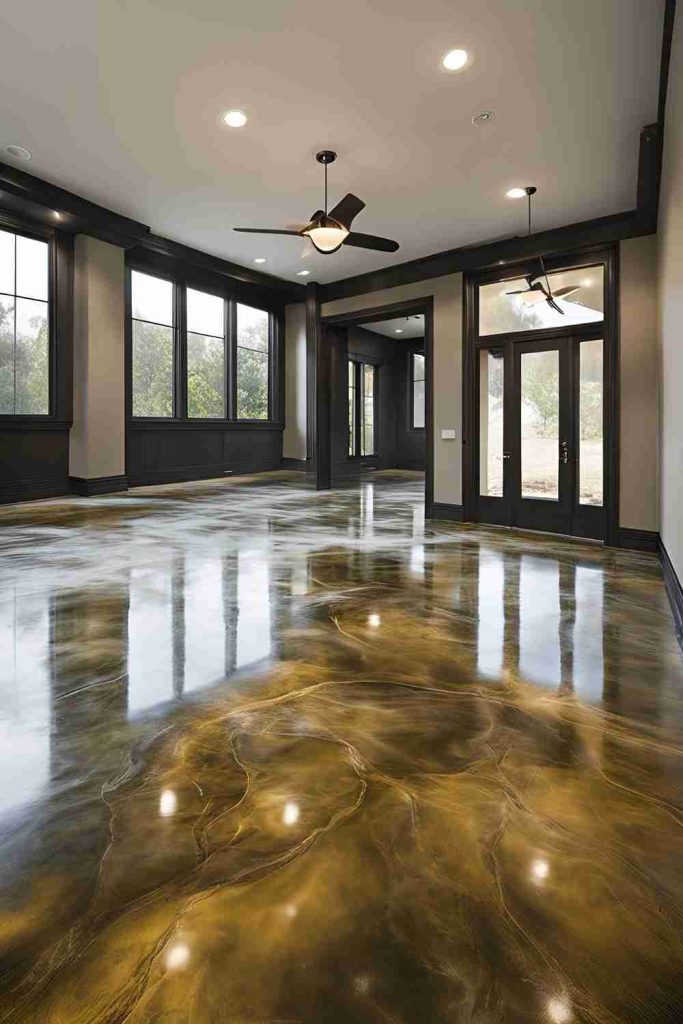
Not only will this option give your space a high-end feel, but stained concrete also brings an unmatched sense of luxury. Whether you’re working on your entryway, living room, or bathroom, the possibilities are endless when it comes to achieving that marble effect.
3. DIY Stenciled Concrete Floors

Stenciling concrete floors allows you to get creative and personalize your space. This technique gives you the freedom to add geometric shapes, floral patterns, or even custom designs. You can completely transform the look of your floor without needing to install tiles or expensive materials.
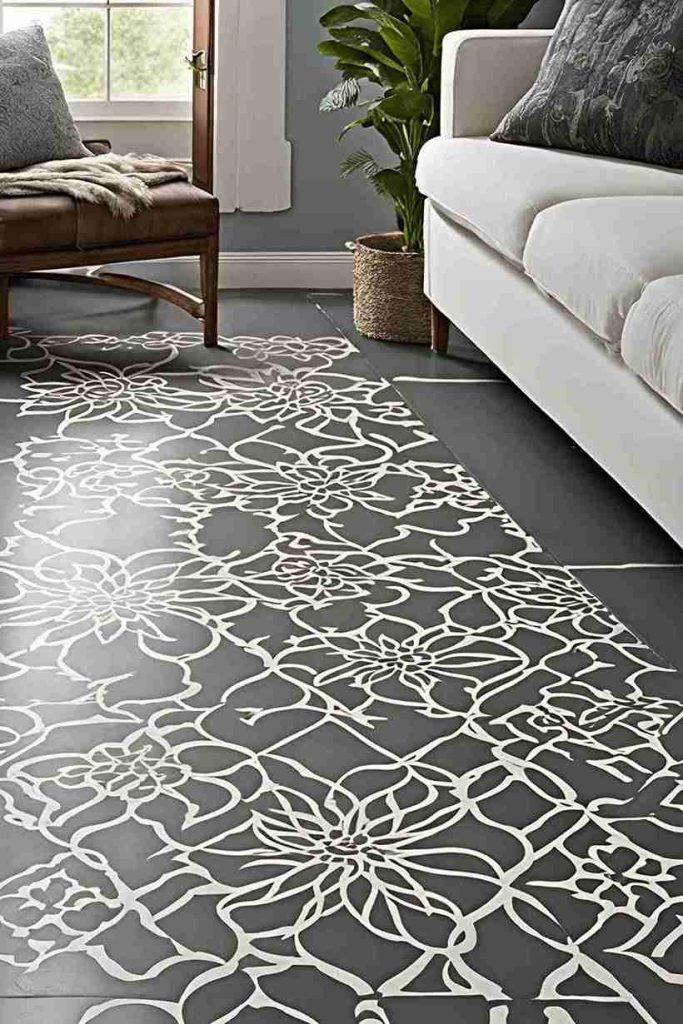
To begin stenciling, choose your design and then lay the stencil over your concrete floor. Use a concrete stain or paint in your preferred colors to fill in the design. To make sure your stencil stays in place, secure it with tape or adhesive. Afterward, carefully remove the stencil, and you’ll be left with a beautiful, intricate pattern that’s sure to impress.
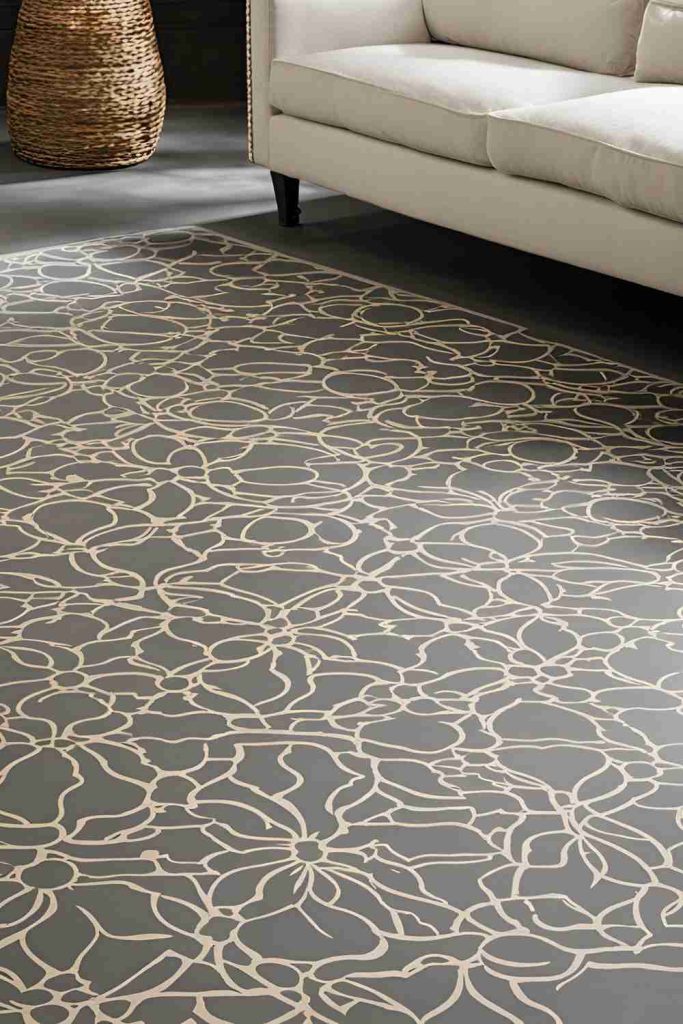
This DIY option is great for homeowners who want to add some personality to spaces like living rooms, kitchens, or patios. Whether you’re going for a contemporary geometric look or a vintage tile design, stenciling offers endless opportunities to customize your floor’s aesthetic.
4. Concrete Floors with Epoxy Coating
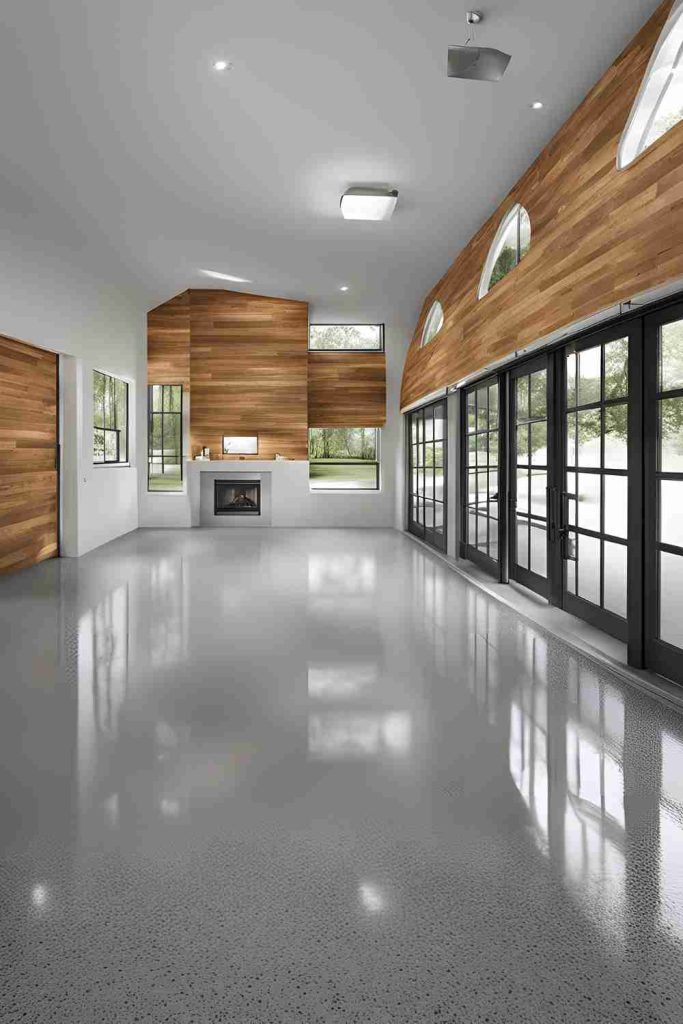
If you’re seeking a shiny, durable, and resilient floor, an epoxy-coated concrete floor is the way to go. Epoxy coatings not only add a beautiful glossy finish but also protect your concrete from stains, water, and heavy foot traffic. This option is especially ideal for garages, basements, or even high-traffic areas in your home.
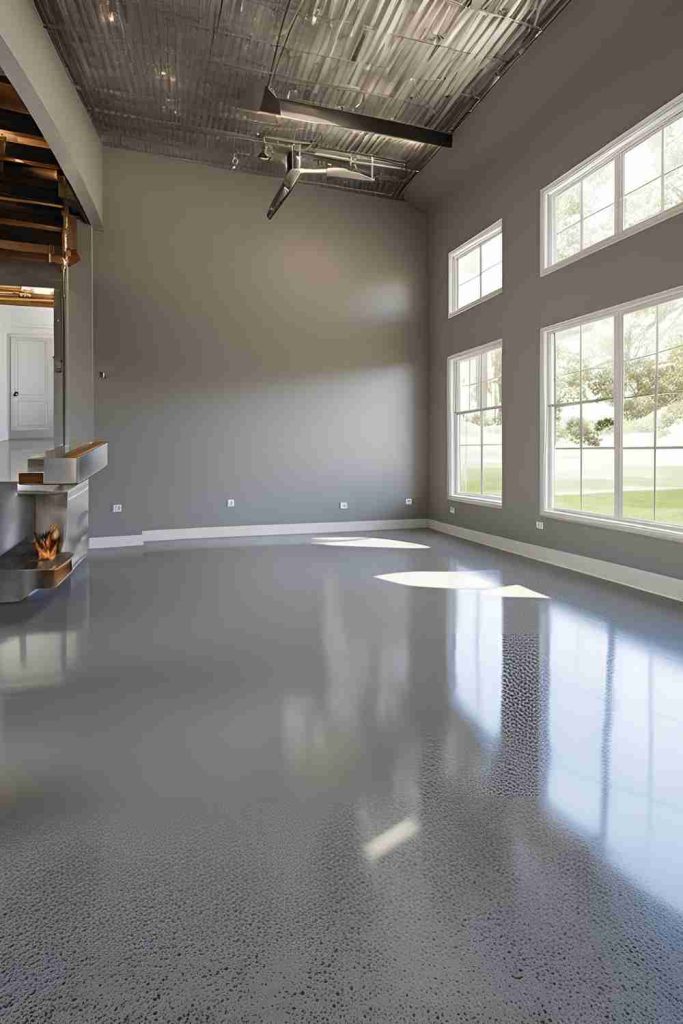
Applying an epoxy coating is a relatively straightforward DIY process. Start by cleaning your concrete surface thoroughly and repairing any cracks. Once dry, apply a primer to ensure the epoxy sticks. Then, pour the epoxy resin onto the surface and spread it evenly with a roller. The result is a smooth, shiny floor that’s both visually striking and highly functional.
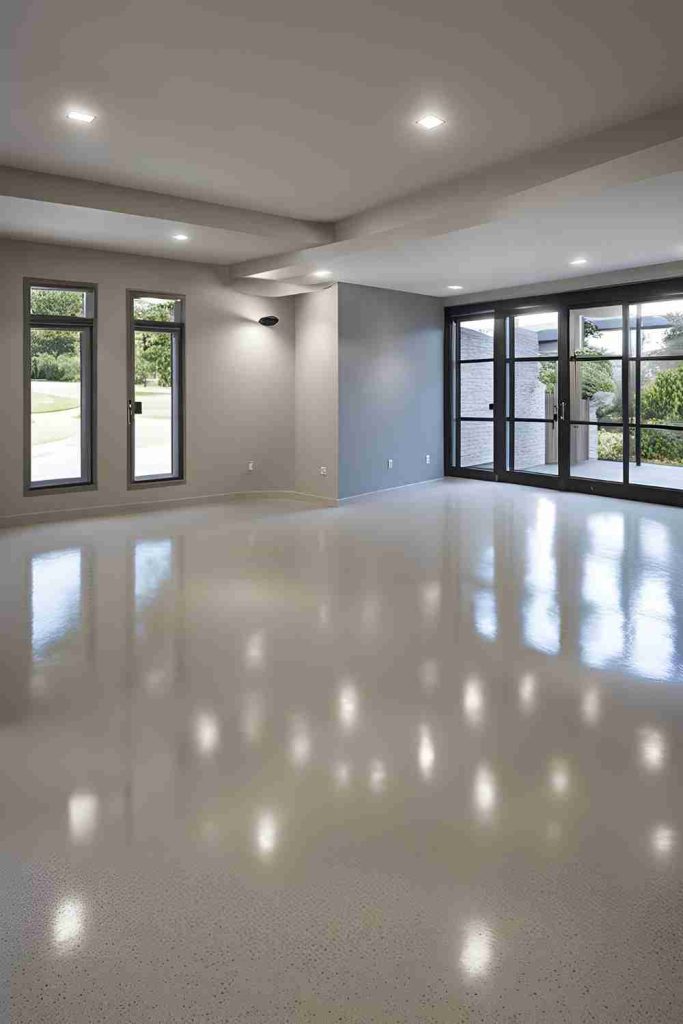
You can also choose from different colors and finishes for your epoxy coating, including metallic hues and even decorative flakes for added texture.
5. Rustic Faux-Wood Concrete Floors
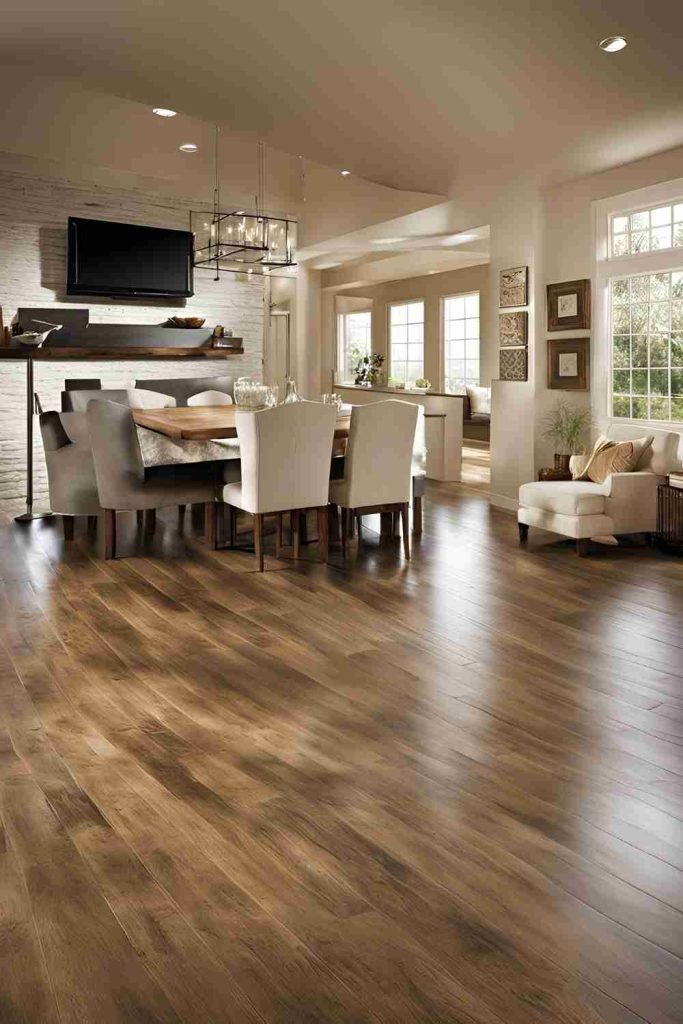
Wood floors are undeniably beautiful, but they can be expensive and high-maintenance. Faux-wood concrete floors offer the best of both worlds—they provide the warm, inviting look of wood while delivering the durability of concrete. With the right techniques, you can replicate the texture, color, and pattern of natural wood on your concrete floor.
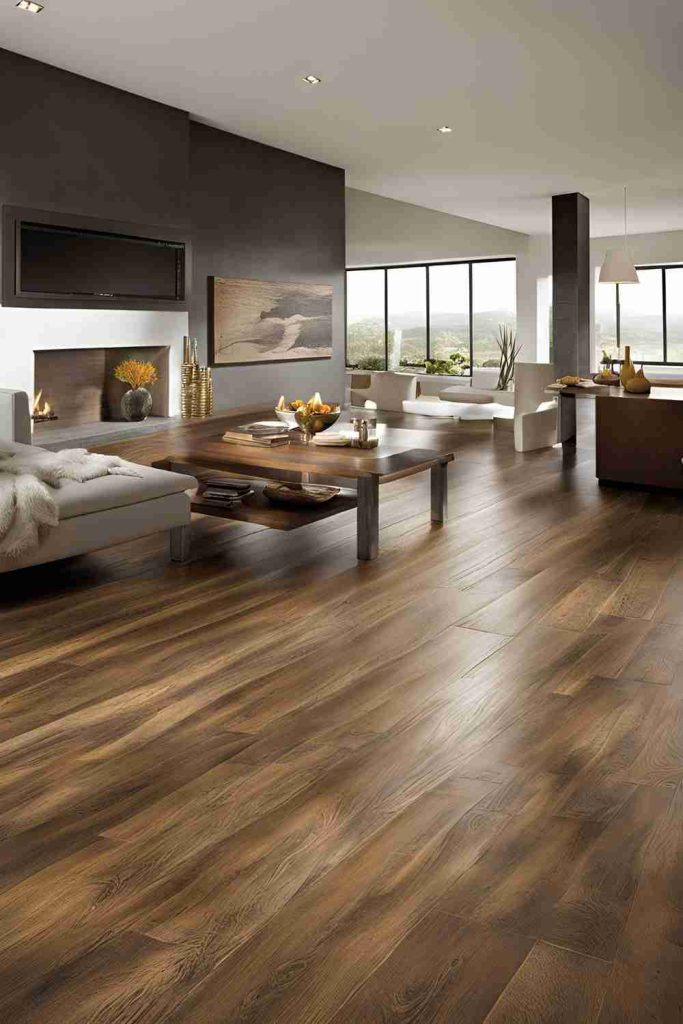
To create faux-wood concrete floors, you’ll need a wood grain stamp and a concrete stain or paint. Start by mixing your concrete and pouring it into place. Once it’s still wet, use a wood grain stamp to press the design into the surface. Then, apply the stain to mimic the appearance of wood. You can customize the color to resemble everything from light oak to deep mahogany.
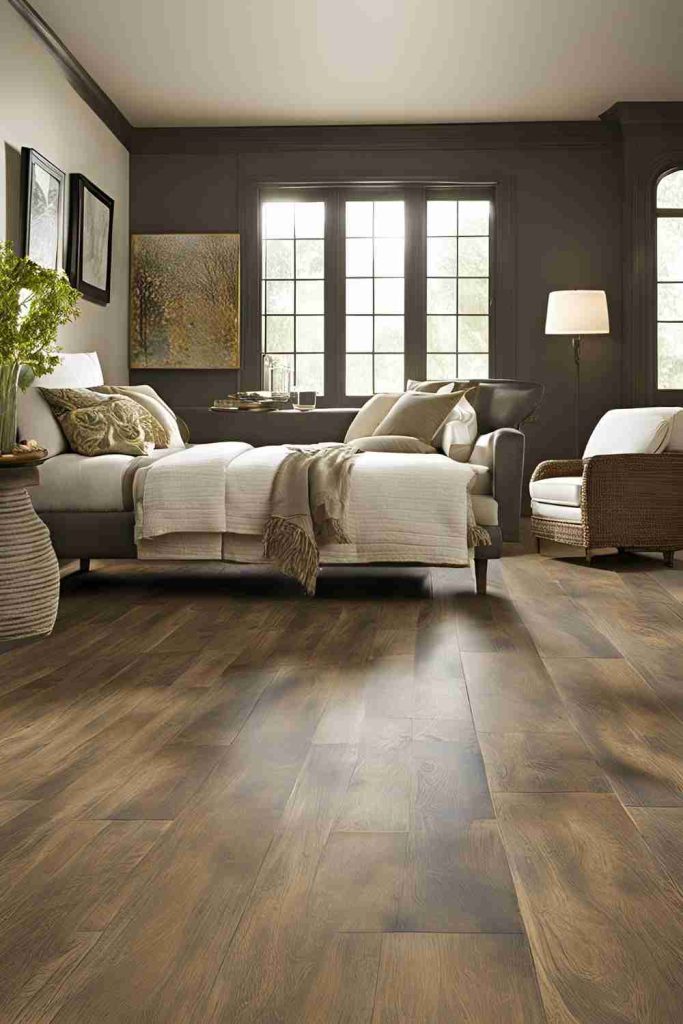
This rustic floor design adds a cozy vibe to living spaces, dining rooms, or even bedrooms while offering the low-maintenance benefits of concrete.
6. Concrete Overlay for a Fresh Start
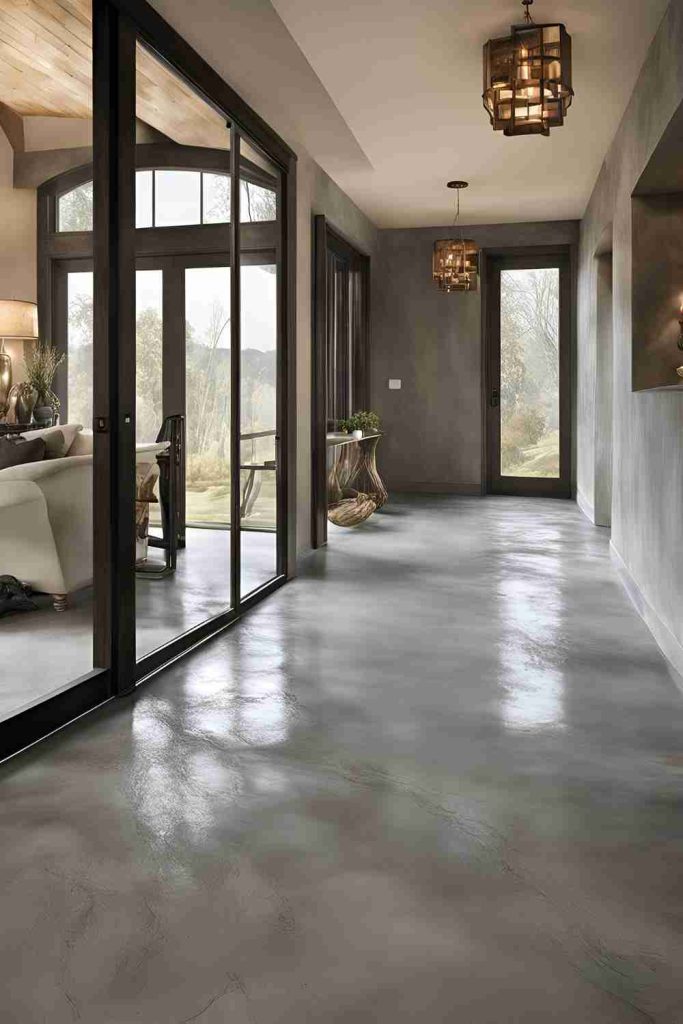
Over time, concrete floors can show signs of wear and tear. If your existing floor is cracked, stained, or outdated, a concrete overlay might be just the solution you need. This technique involves pouring a thin layer of fresh concrete over the old surface to create a smooth and clean foundation.
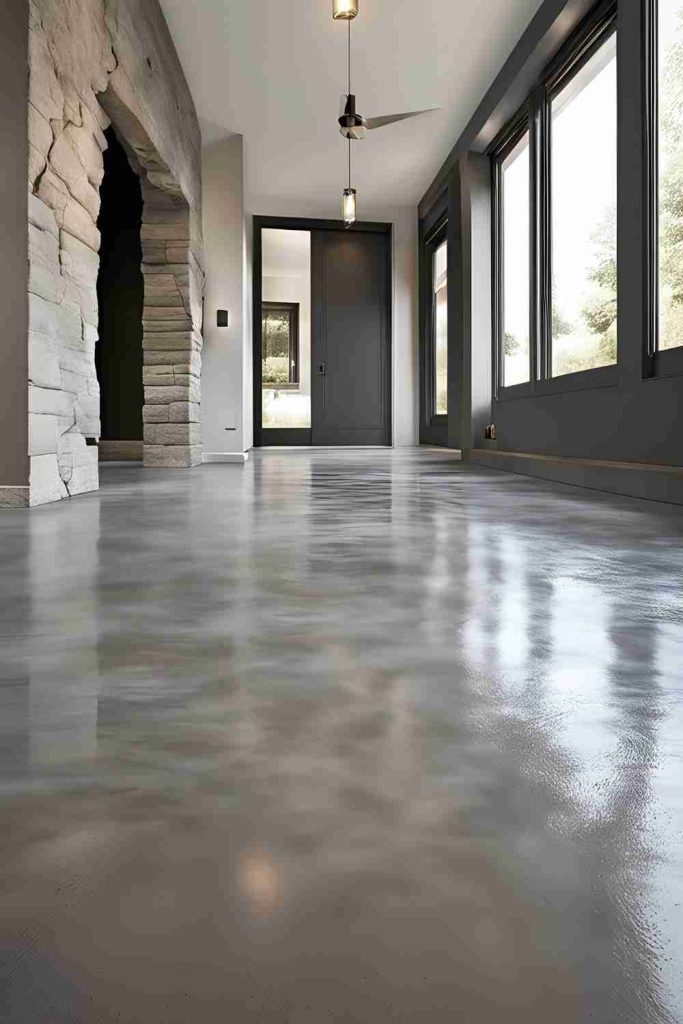
One of the best aspects of concrete overlays is the flexibility they offer. Once the overlay is applied, you can customize it by adding stains, stamps, or textures to create a unique look. Whether you’re aiming for a sleek polished finish or a textured rustic design, a concrete overlay offers a fresh start for your floors without the cost of a full replacement.
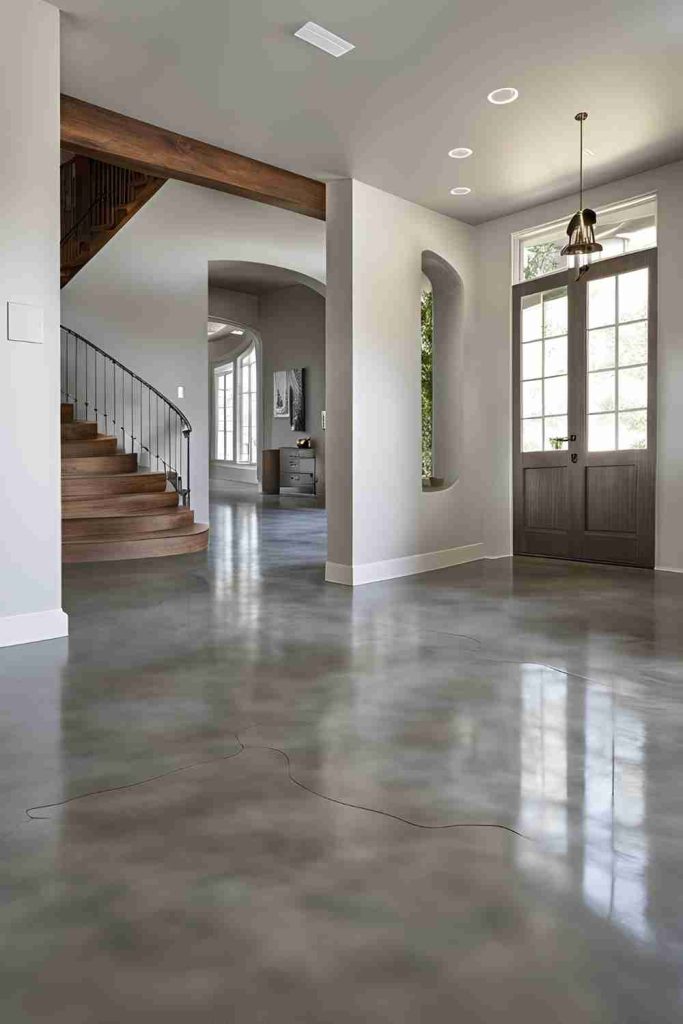
This is a great option for homeowners with existing concrete floors who want to update their look without having to completely demolish and replace the flooring.
7. Painted Concrete Floors
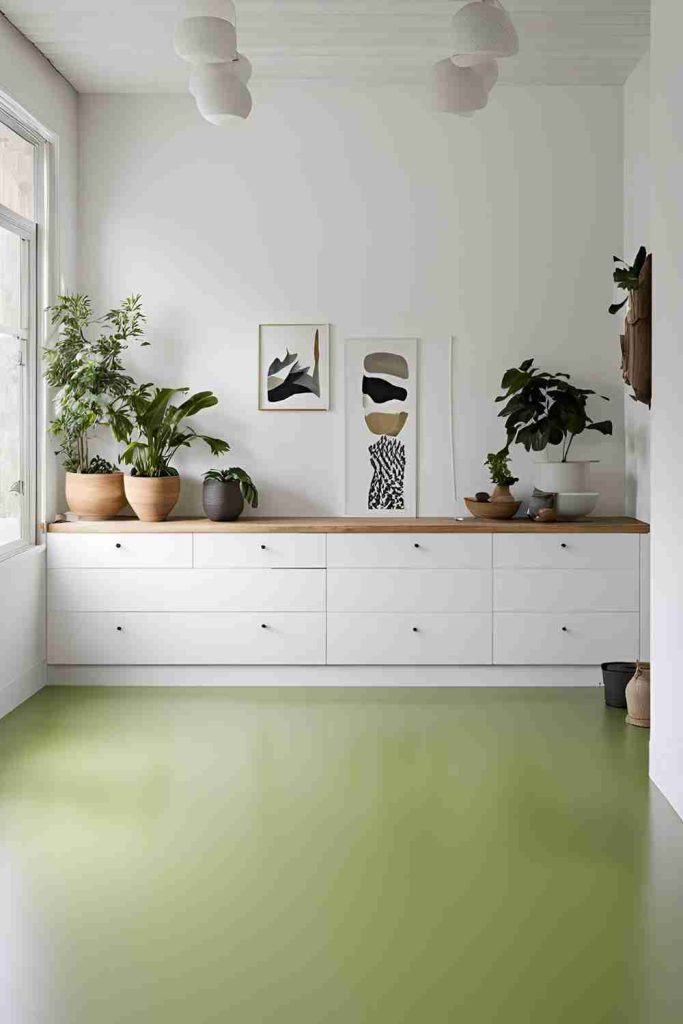
Sometimes, all a floor needs is a fresh coat of paint to bring it back to life. Painted concrete floors are one of the simplest and most affordable DIY options for updating a space. Whether you want to add a bold pop of color or a subtle, muted tone, the options are endless.
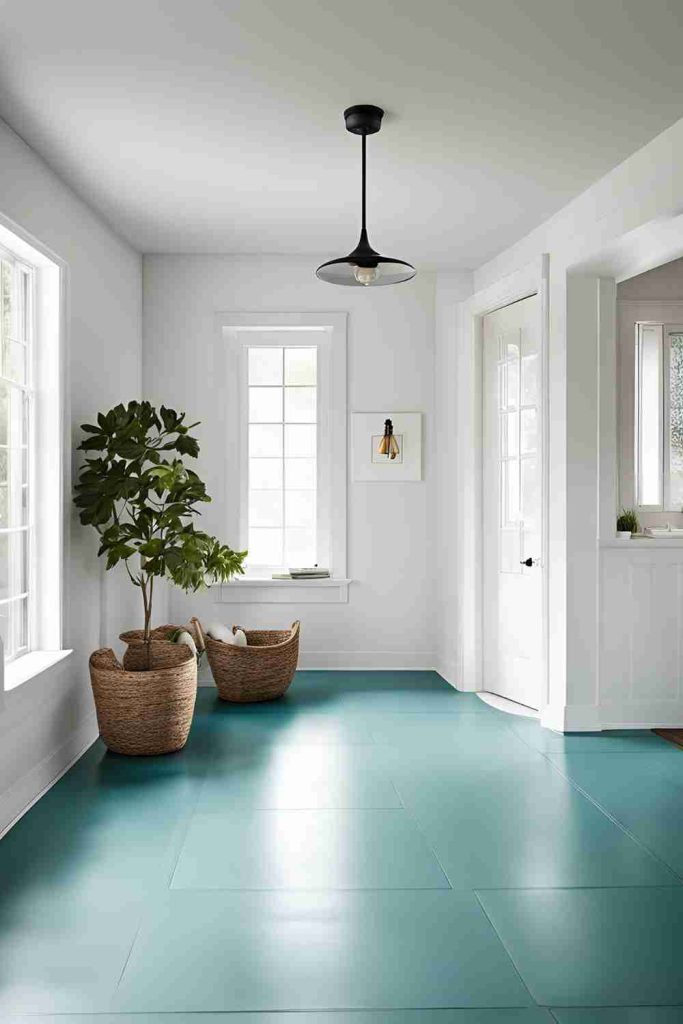
Before painting, make sure to clean and prep your concrete surface by patching any holes or cracks. Use a concrete-specific primer to ensure that the paint adheres properly. Afterward, apply a durable concrete floor paint using a roller or brush. You can experiment with various colors to match your home’s décor. If you want to add a unique touch, try stenciling a design or pattern onto the painted surface.
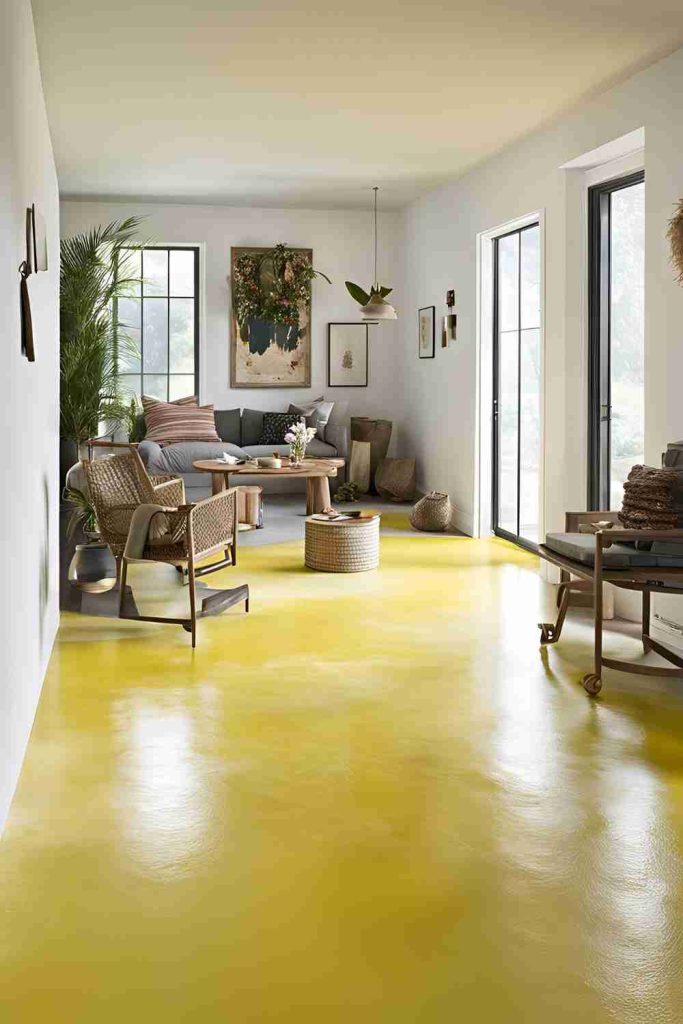
Painted concrete floors are especially great for garages, basements, and entryways, but they can also add a vibrant twist to other rooms in the house.
8. Metallic Epoxy Concrete Floors
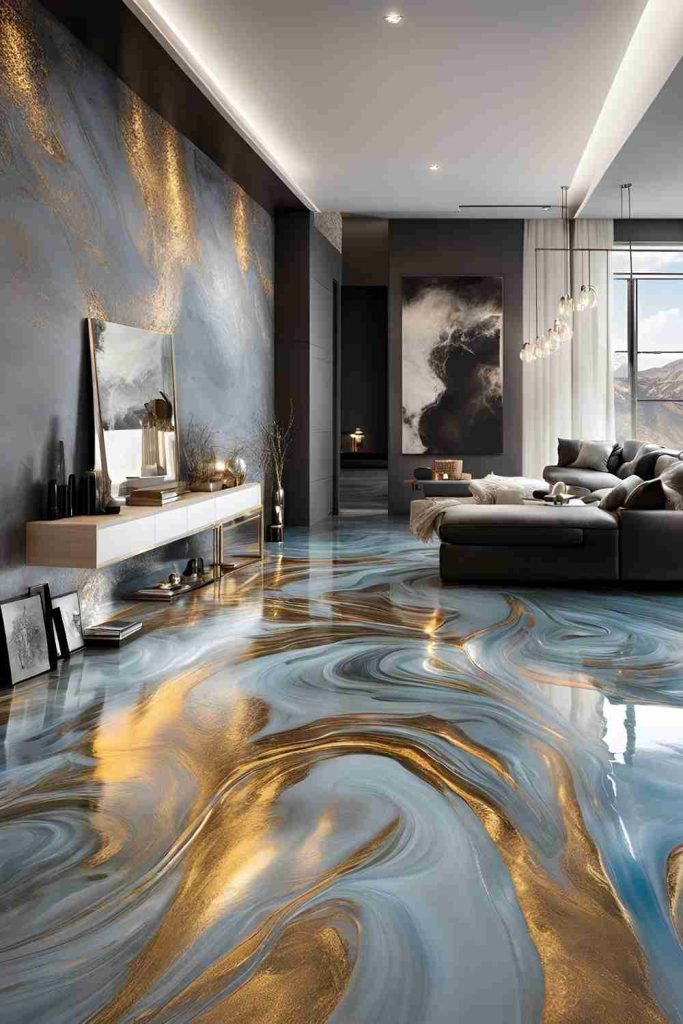
If you want a modern, high-end look with a dash of drama, metallic epoxy concrete floors are the way to go. These floors create a mesmerizing, reflective effect that mimics the appearance of marble, stone, or even liquid metal. The shimmering, colorful swirls are perfect for anyone who wants a floor that stands out.
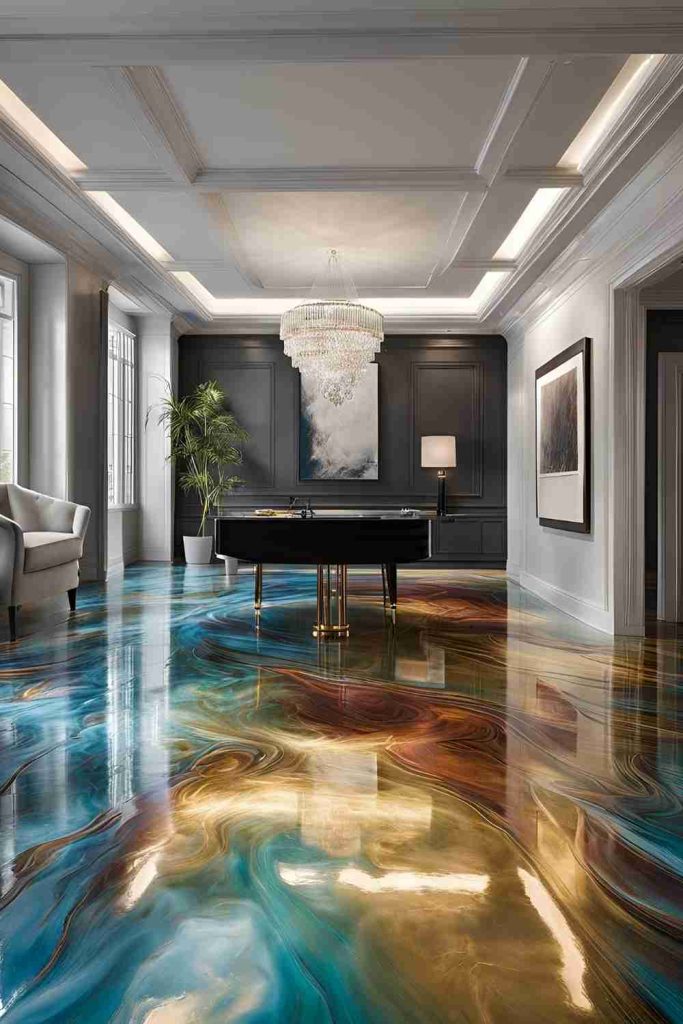
Creating metallic epoxy floors involves applying a special metallic epoxy resin. This is a two-part system that requires mixing the resin and hardener before application. Once mixed, the metallic pigments are added to create beautiful iridescent effects. Depending on your choice of colors and application technique, you can achieve a sleek, futuristic look that’s perfect for modern interiors.
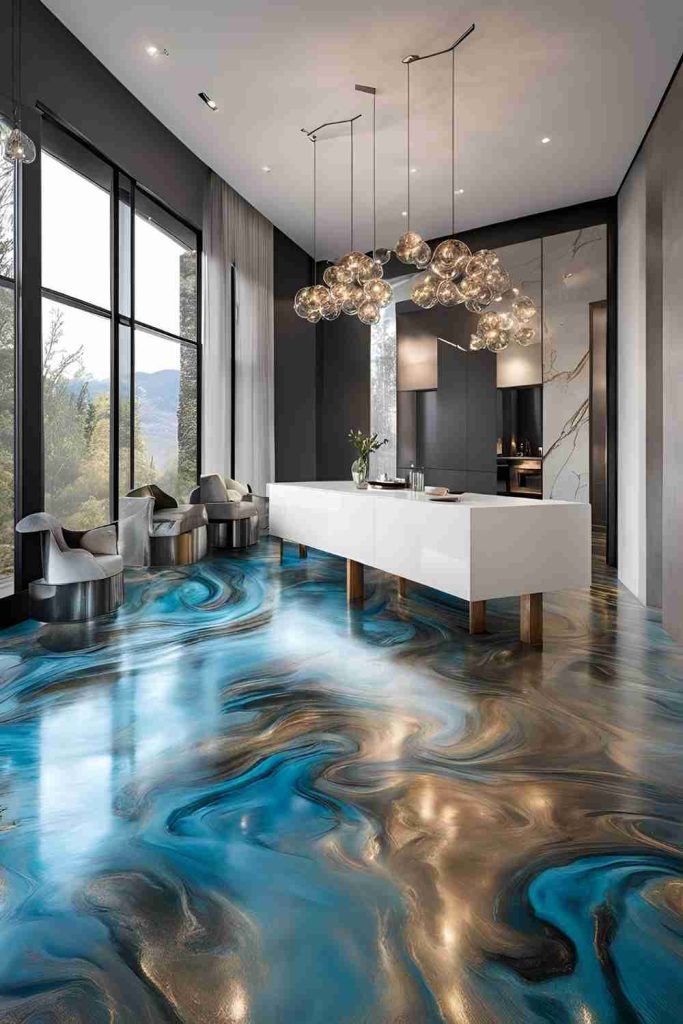
While metallic epoxy floors are stunning, they’re also durable and easy to clean. Their unique appearance makes them perfect for high-traffic areas like kitchens, living rooms, and home offices.
9. Concrete Floors with Decorative Aggregates
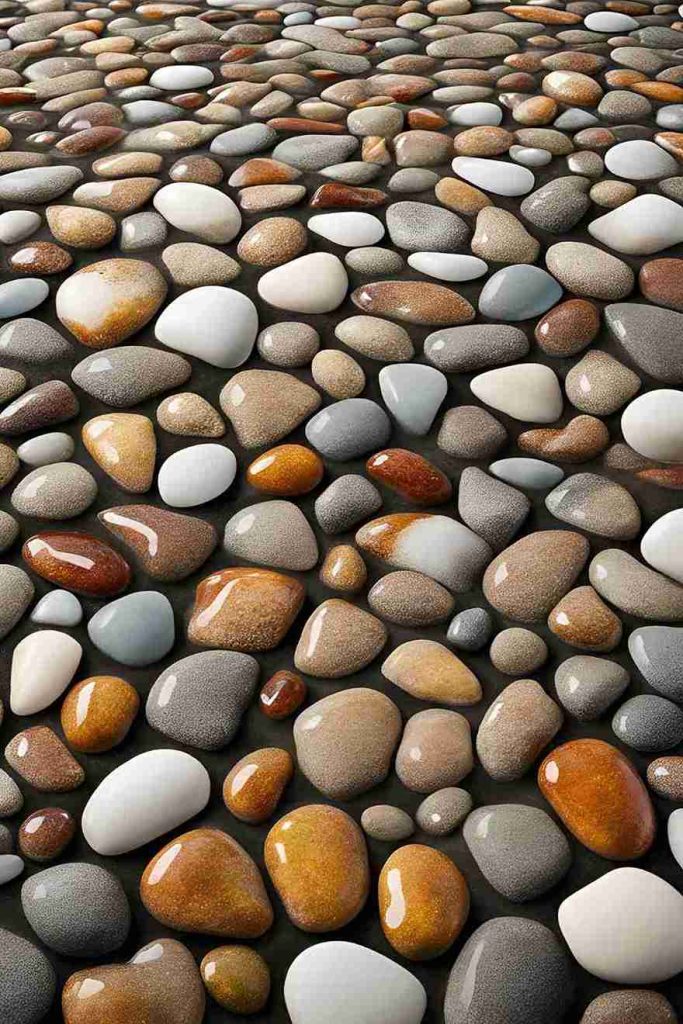
For a floor that’s truly one-of-a-kind, consider adding decorative aggregates like glass, pebbles, or shells to your concrete. These materials are embedded into wet concrete to create a textured, eye-catching surface that’s both beautiful and functional.
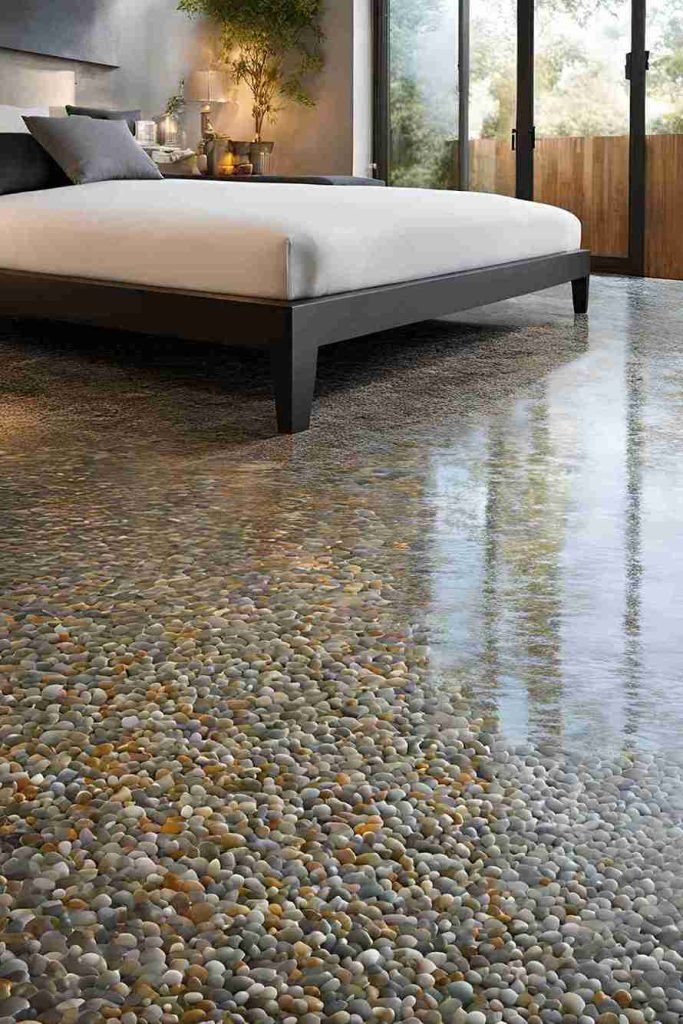
This DIY project involves mixing your aggregates into the concrete before pouring it into place. You can scatter the aggregates evenly or group them together for added effect. Once the concrete cures, use a polishing or grinding machine to expose the decorative aggregates, revealing a stunning finish. This technique is great for outdoor areas like patios, walkways, or even indoor spaces like kitchens and bathrooms.

Decorative aggregates create a dynamic, natural look that adds both style and function to your concrete floors.
10. DIY Concrete Floors with Color Blocking
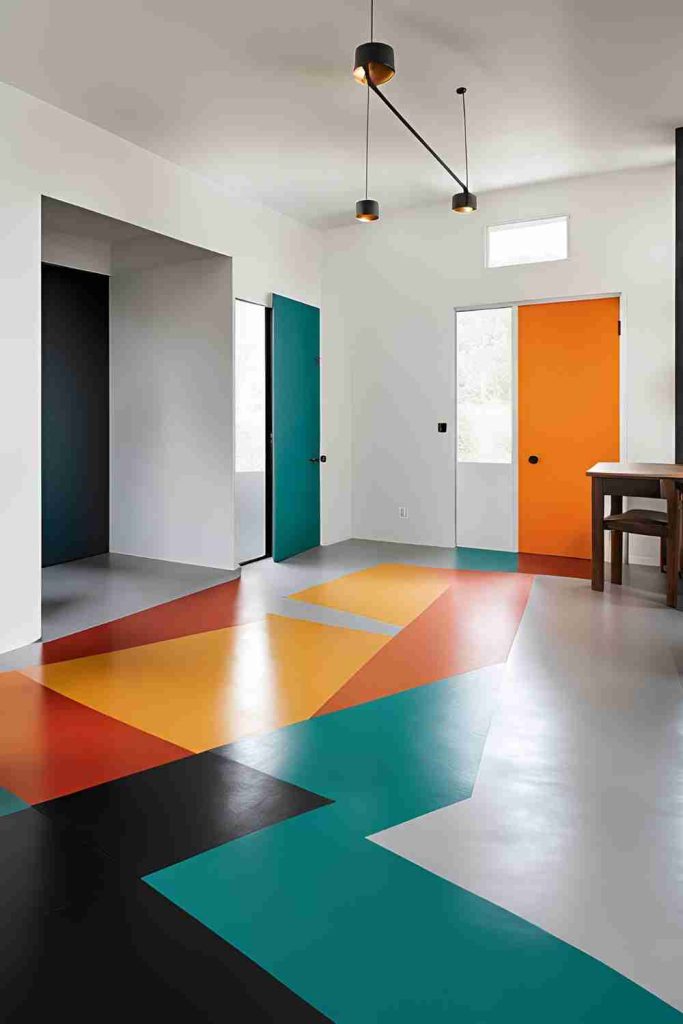
Color blocking is a popular design technique that involves using contrasting colors to create bold, geometric patterns. Applying this to your concrete floors can give your space a modern and playful twist. Whether you opt for two colors or several, color-blocked concrete floors are sure to make a statement.
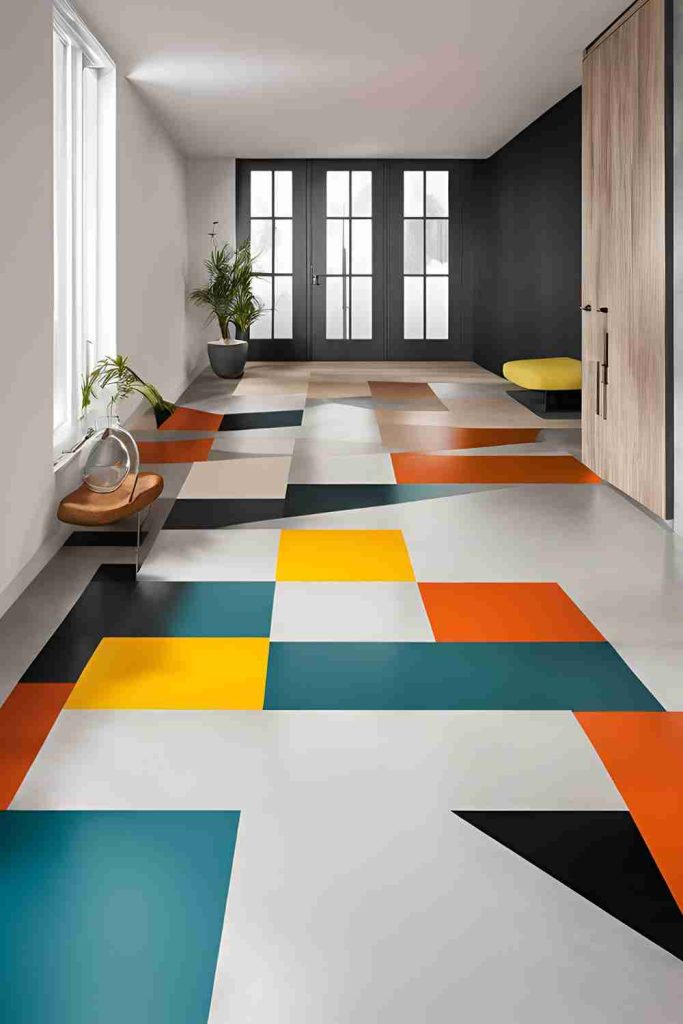
To get started, decide on your color scheme and choose a design. Use painter’s tape to outline the shapes and areas where you want to apply different colors. Once your design is set, apply the concrete paint or stain, taking care to let each section dry before moving on to the next. The end result will be a custom, vibrant floor that perfectly suits your style.
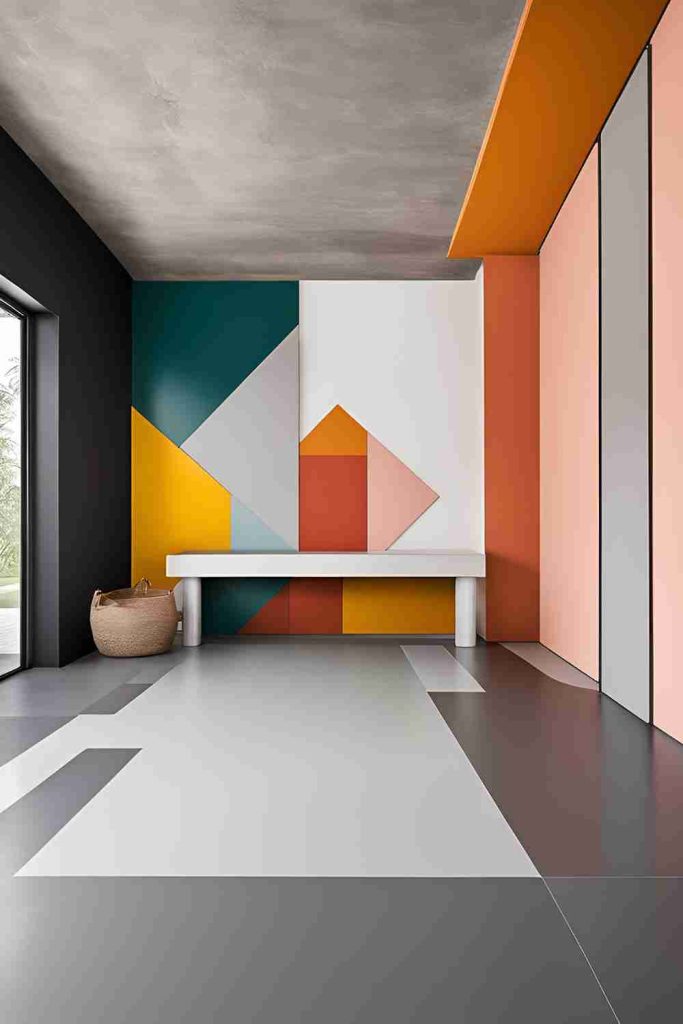
Color-blocking can add a touch of fun to any space, from your living room to your entryway or even your home office.
11. Geometric Painted Concrete Patterns
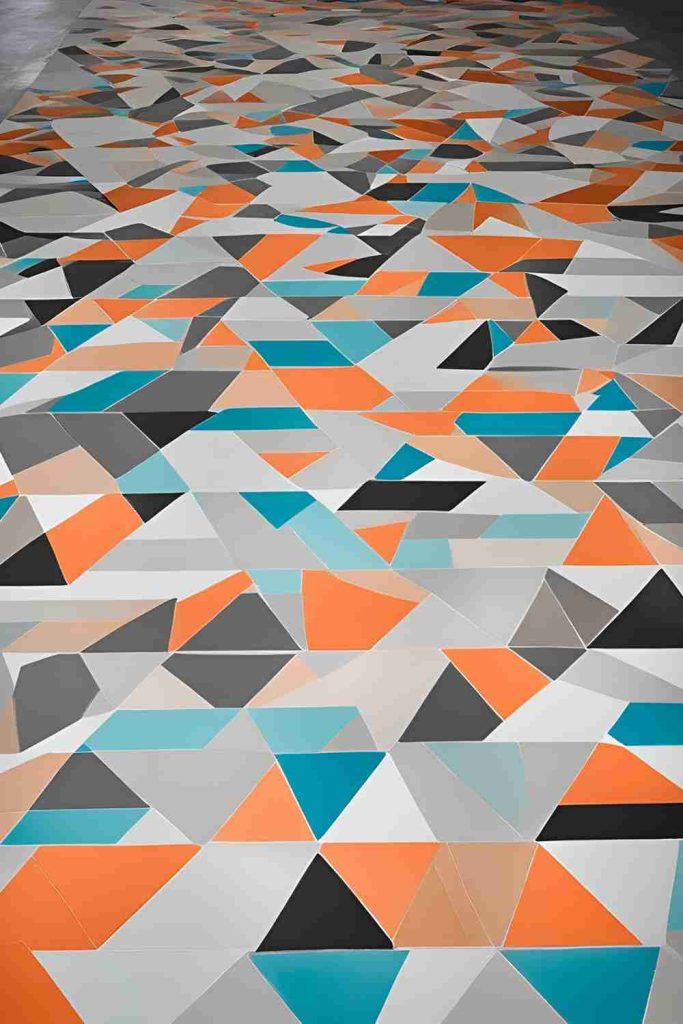
For those who love clean lines and sharp edges, geometric painted concrete patterns are a great way to add an artistic touch to your floors. This technique allows you to experiment with shapes like triangles, hexagons, and chevrons to create visually striking designs.

Start by drawing out your pattern on the concrete surface using chalk or painter’s tape. Then, use high-quality concrete paint in the desired colors to fill in the design. Geometric patterns can range from minimalist and subtle to bold and colorful, depending on your preferences. After the paint has dried, seal the floor to protect the design from wear and tear.
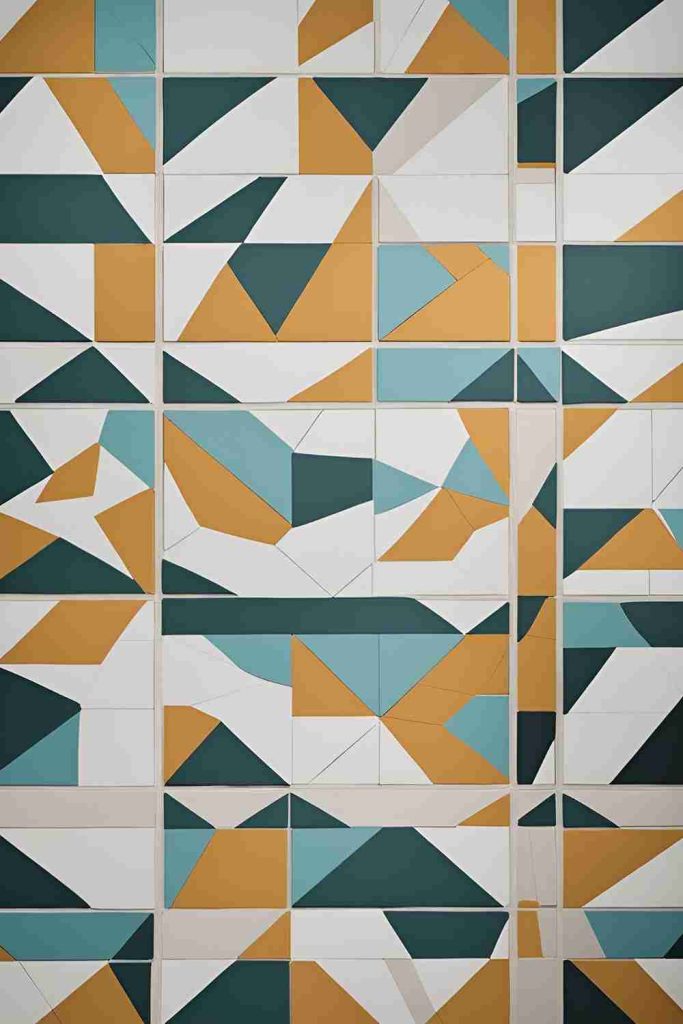
Geometric patterns are perfect for adding a modern, artsy vibe to any room in your home.
12. Concrete Floors with Inlaid Tiles
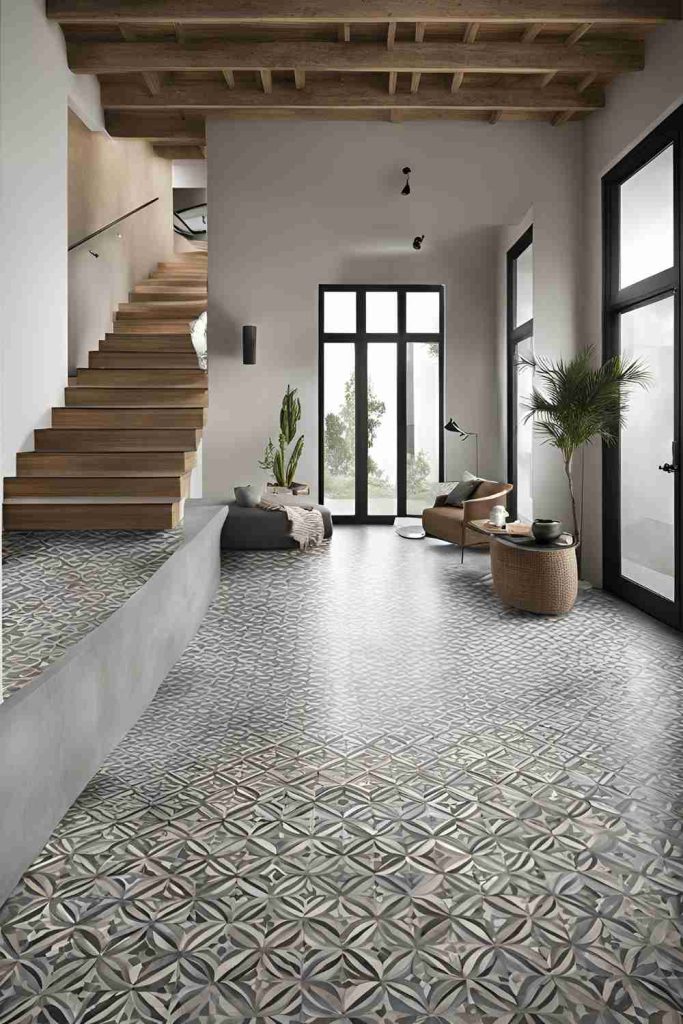
Incorporating tiles into your concrete floor design can elevate the look of any room. Whether you opt for a few decorative tiles in a feature area or cover the entire floor with patterned tiles, this approach adds texture and character to your concrete surface.
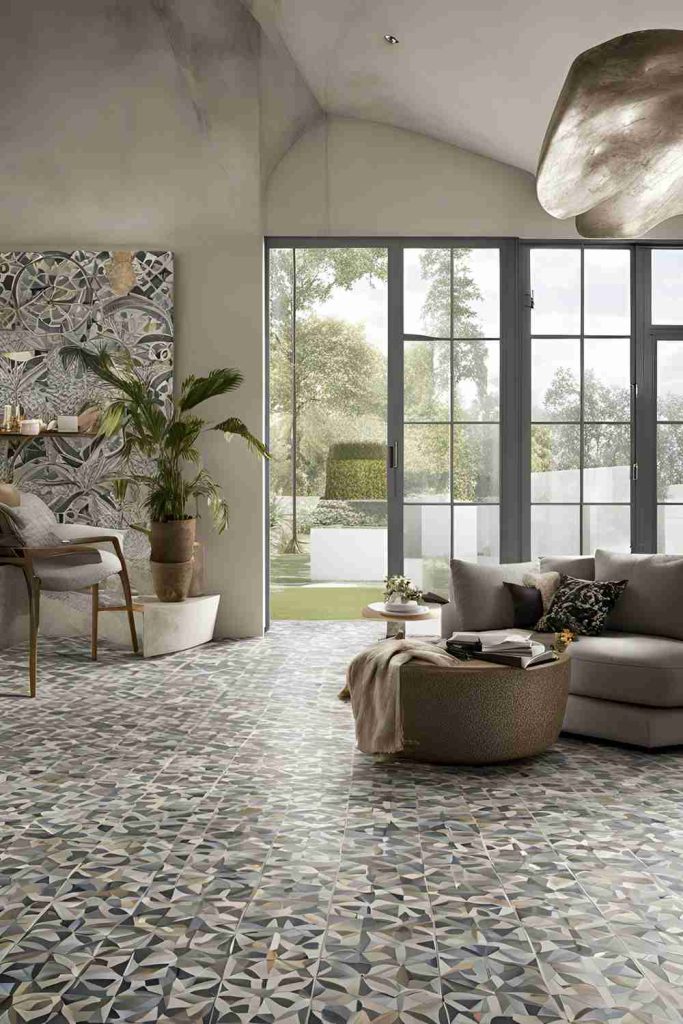
To create a floor with inlaid tiles, first prepare your concrete surface by cleaning and leveling it. Then, plan where you want the tiles to be placed and create a grid pattern. Once that’s set, place the tiles into the wet concrete and allow them to set before finishing the floor with a sealant.
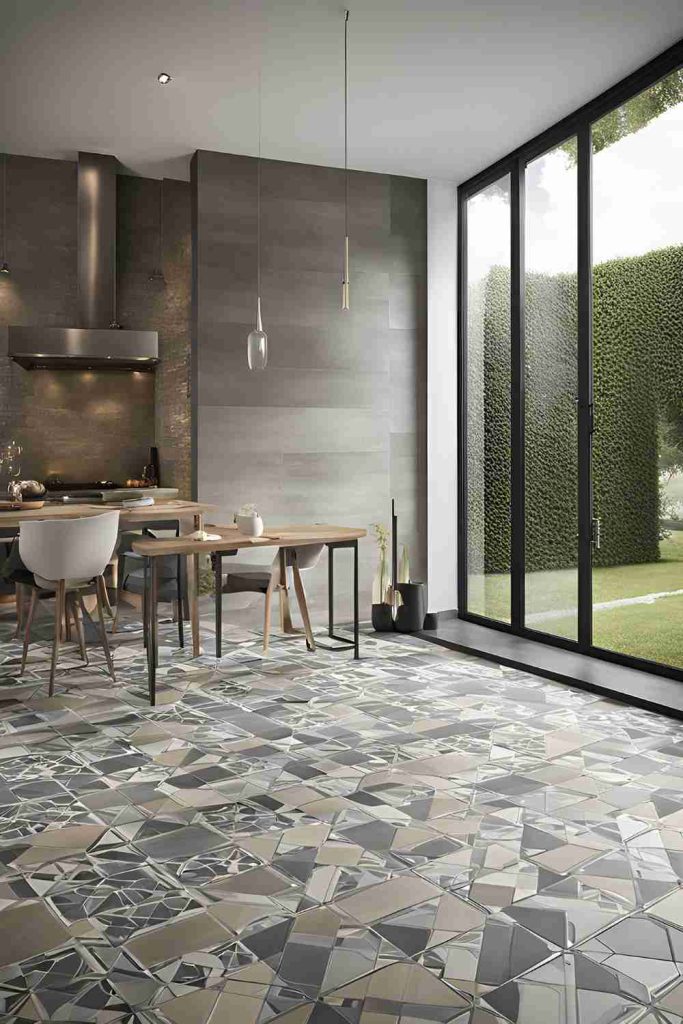
Tiles offer the opportunity to introduce patterns, colors, and materials like ceramic, glass, or stone, giving you a customized look that can’t be replicated.
13. Hand-Troweled Concrete Textures
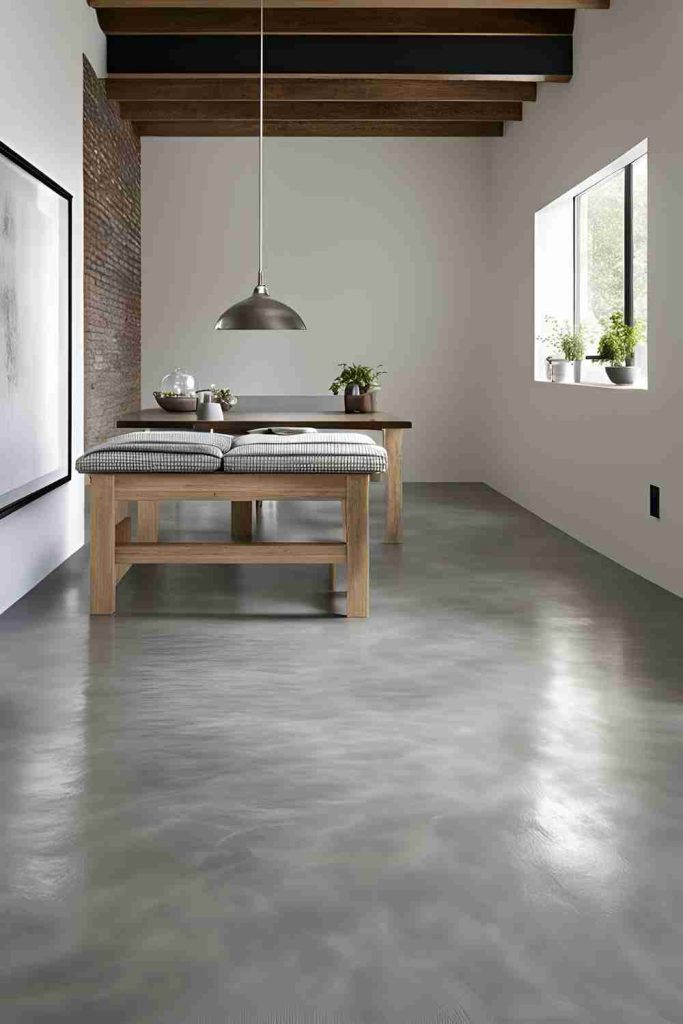
If you’re looking for a more tactile and unique floor finish, hand-troweling is a fantastic DIY technique. This method involves using a trowel to manipulate the concrete surface, creating textures that range from subtle to bold. Hand-troweled concrete floors are particularly effective when you want a more rustic, artisan-style floor.
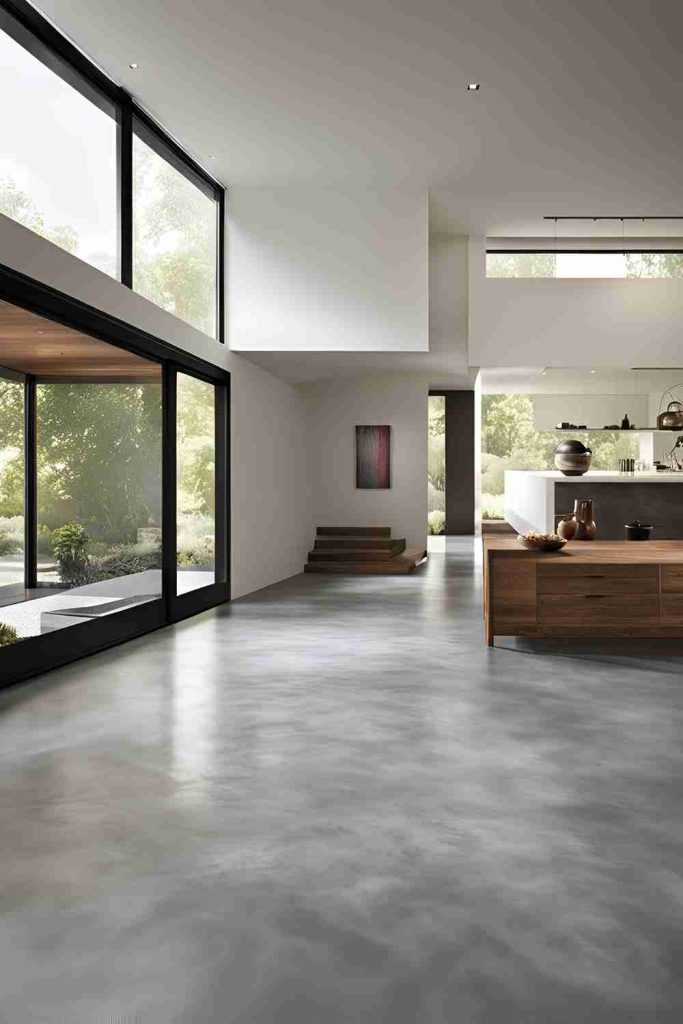
To start, pour the concrete onto your floor and allow it to set slightly. Then, using a steel trowel, press into the surface and create textures like swirls, waves, or even a rough, stone-like pattern. You can also use specialty trowels that mimic the appearance of natural materials like slate or limestone.
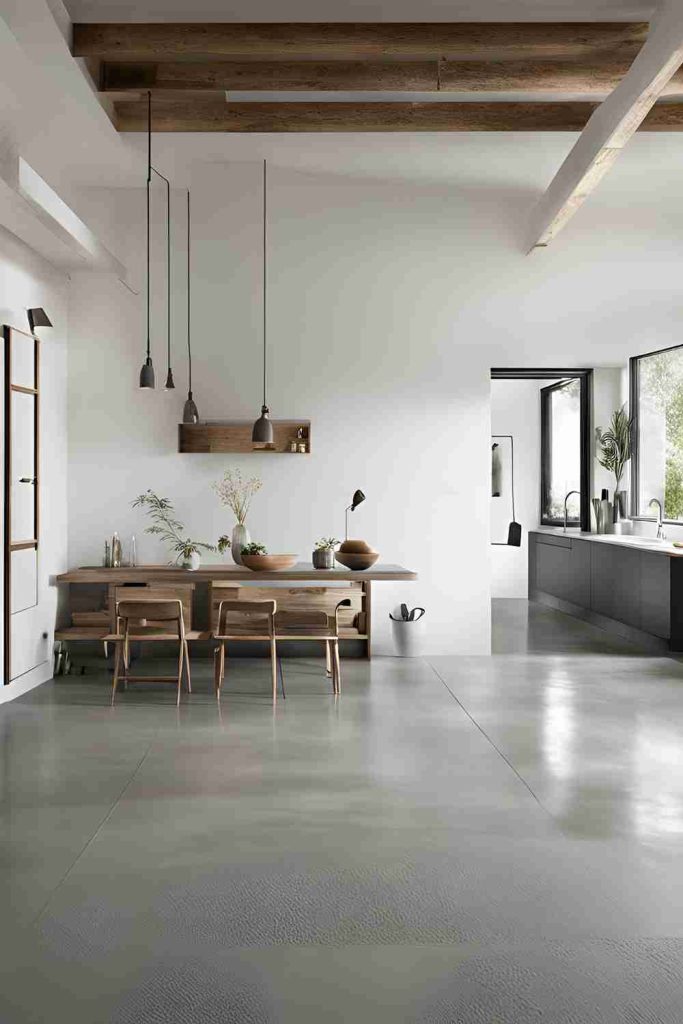
Hand-troweled floors are perfect for living areas, entryways, or any space where you want to bring warmth and charm into the room. The textured surface is not only visually appealing but also adds dimension to the floor, making it a stunning focal point in any room.
14. High-Contrast Stain Techniques
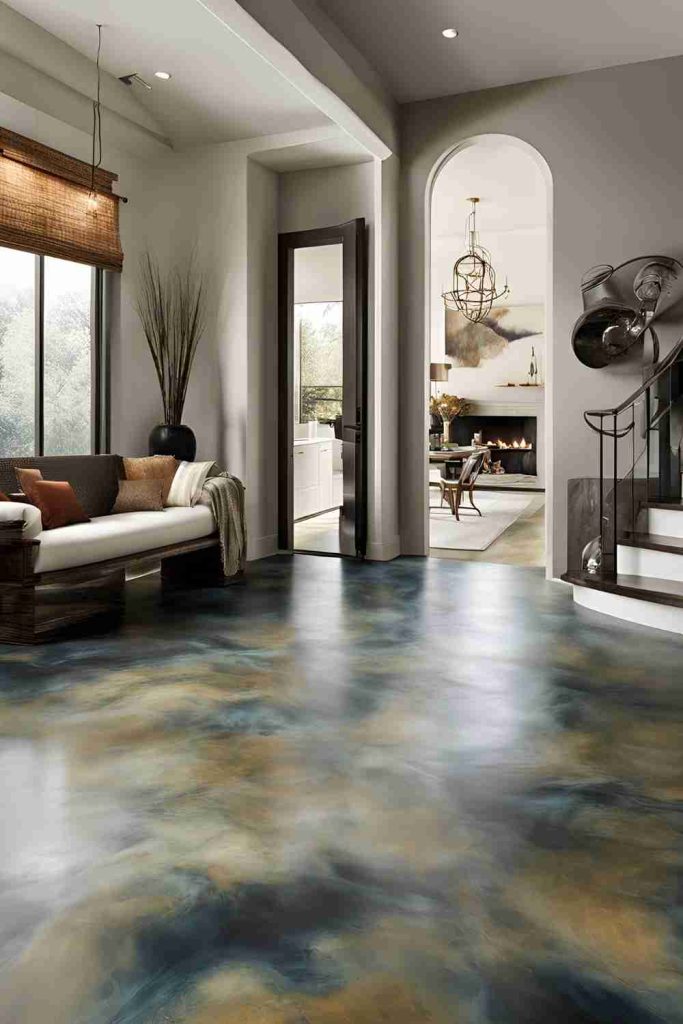
If you want a bold, dramatic floor design that’s sure to grab attention, high-contrast staining is the way to go. This technique involves using two or more contrasting concrete stains to create a dynamic look. Whether you choose light and dark tones or vibrant colors, the possibilities for high-contrast stained floors are endless.
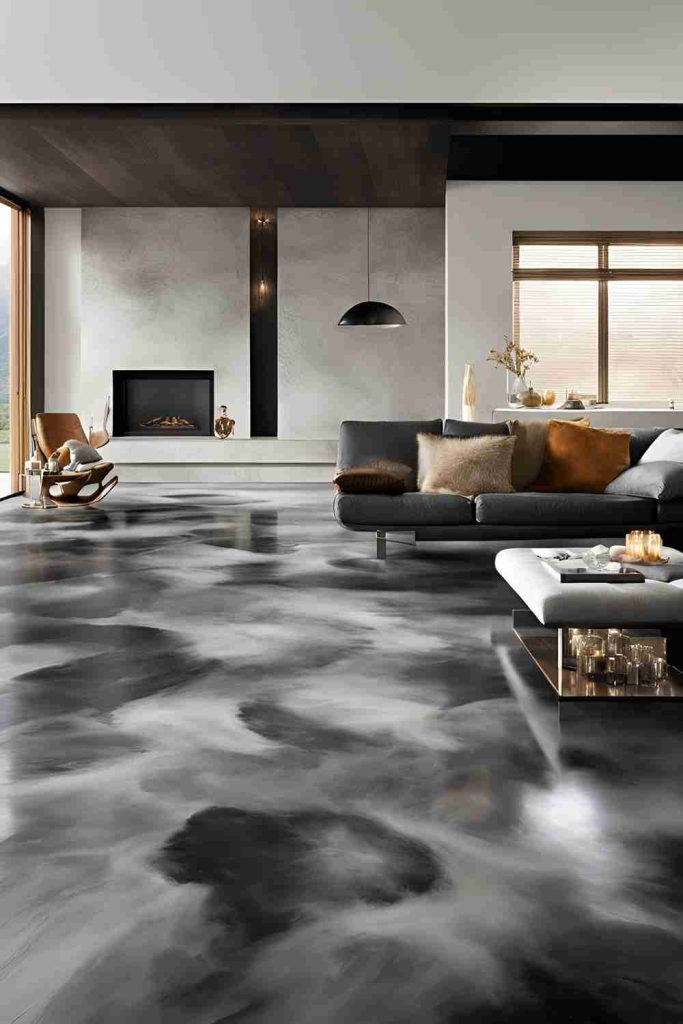
To achieve this look, choose your contrasting stain colors and apply them to the concrete using a sprayer or sponge. You can create intricate patterns or simply blend the colors together for a more fluid, artistic effect. This technique works well in large spaces like living rooms or dining areas, where the floor can become a central design element.
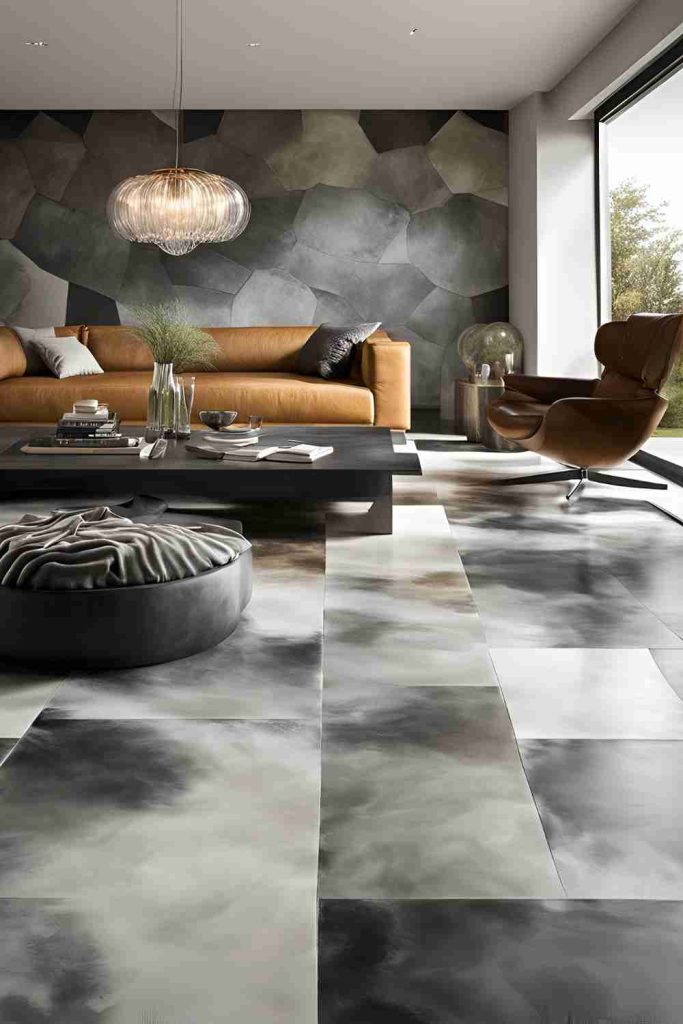
High-contrast staining adds depth and visual interest to your concrete floors, making them stand out in a modern and sophisticated way.
15. Concrete Floors with Natural Stone Finishes
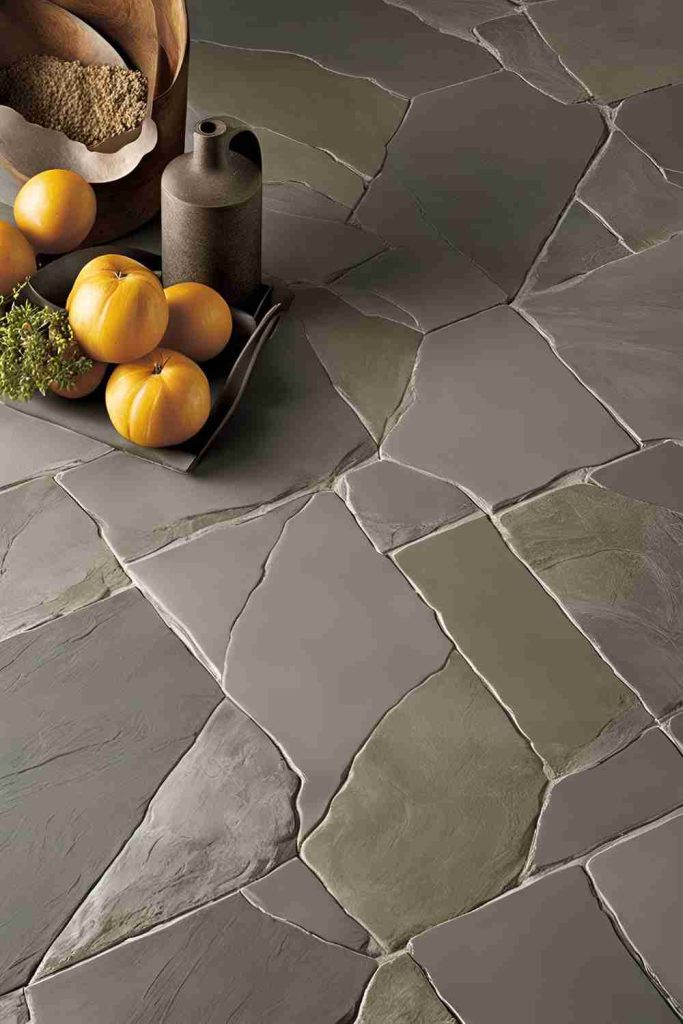
Natural stone finishes bring a timeless, organic quality to your concrete floors. This DIY technique allows you to mimic the look of slate, granite, or other natural stones, without the hefty price tag. You can achieve this look by stamping the concrete to create texture or by adding a decorative overlay that simulates the appearance of stone.
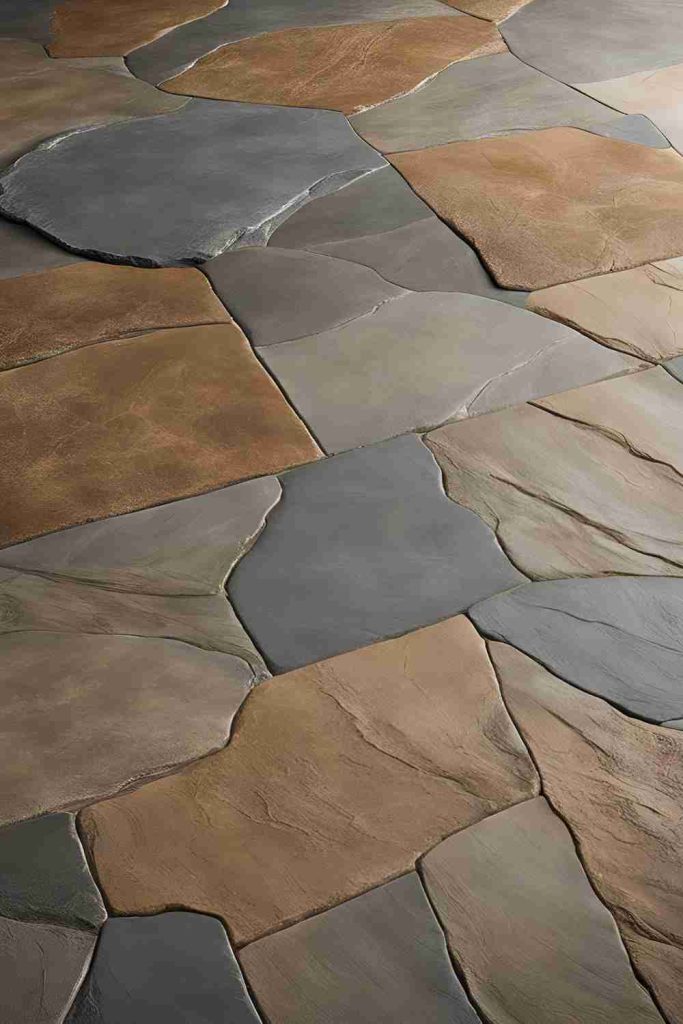
To create a natural stone finish, start by choosing a stone texture stamp and pressing it into the wet concrete surface. For a more detailed look, add concrete stains that mimic the colors and veining of real stone. Once the concrete cures, you’ll have a floor that looks like it’s made from expensive natural stone, but with the durability and cost-effectiveness of concrete.
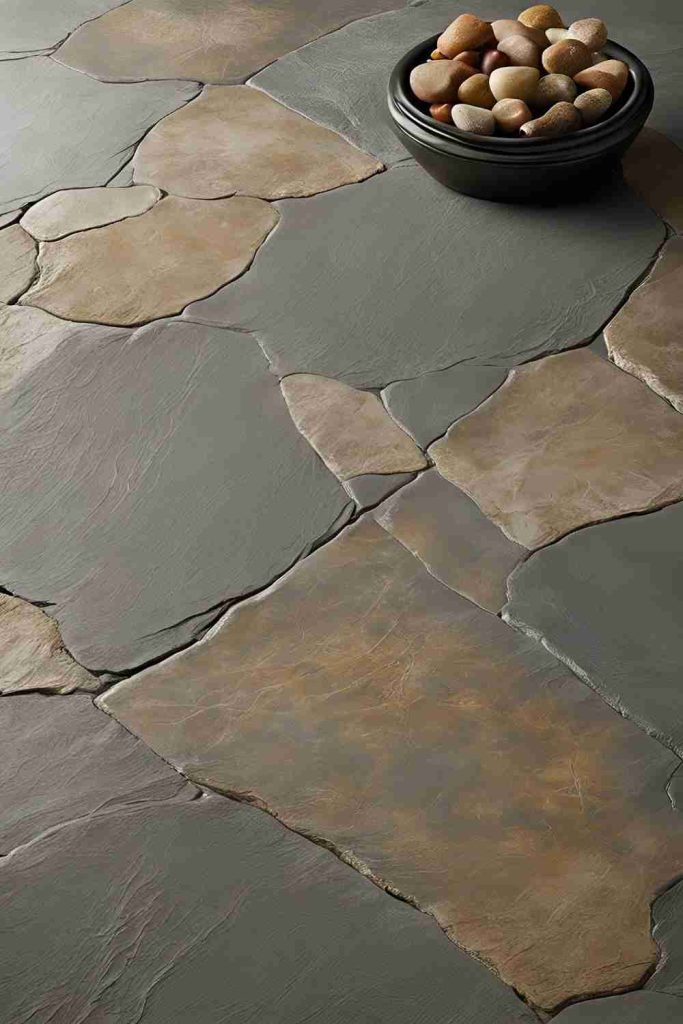
Natural stone-inspired concrete floors are perfect for creating a rustic, earthy look in kitchens, bathrooms, and even outdoor spaces.
16. DIY Polished Concrete with Embedded LED Lights
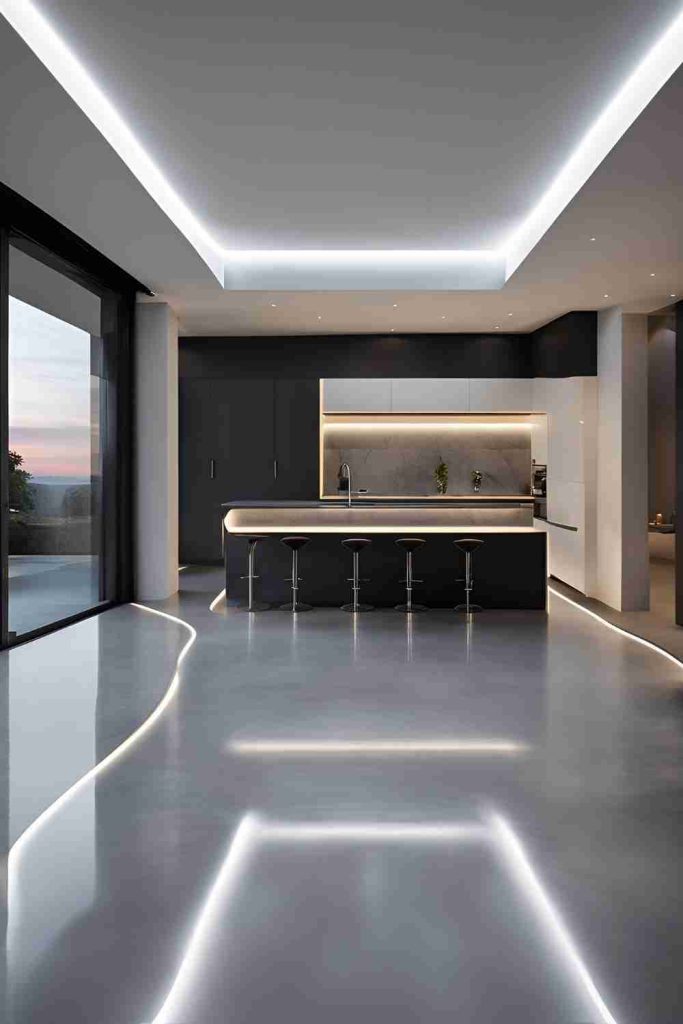
For a futuristic, eye-catching look, why not try embedding LED lights into your polished concrete floor? This unique design idea not only adds a modern touch but also incorporates lighting to create a dramatic effect. LED lights can be embedded around the perimeter of the room or in specific patterns, making your floor come alive at night.
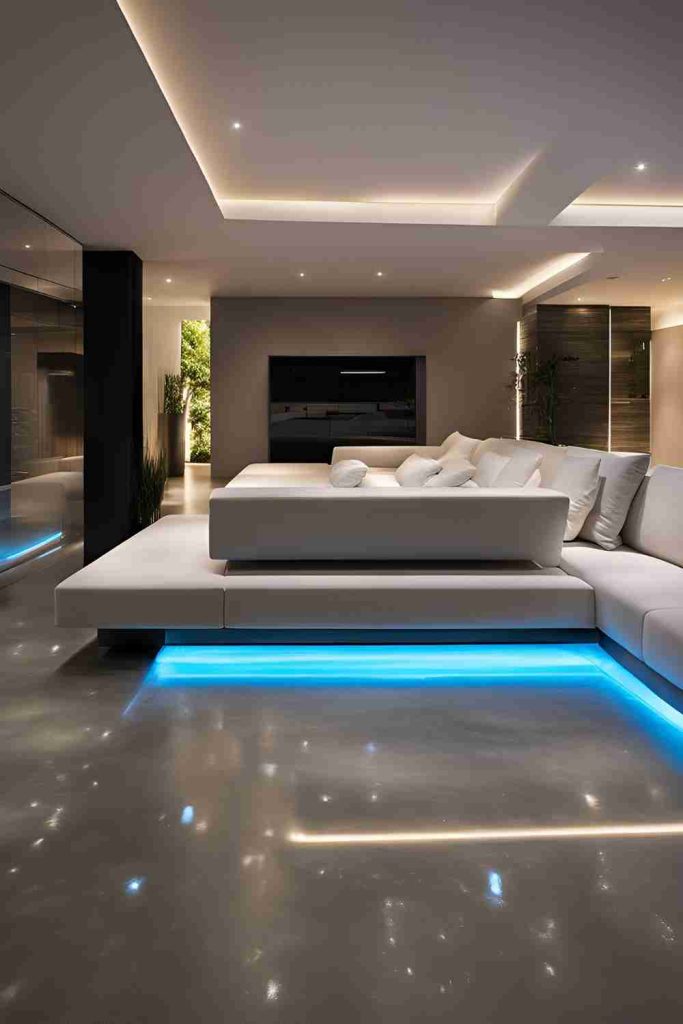
To achieve this, you’ll need to pour your concrete floor as usual and then carefully embed the LED lights into the surface before it sets. Once the concrete is cured, polish the floor to a smooth finish, leaving the LED lights exposed. The result is a sleek, high-tech floor that combines design with function.
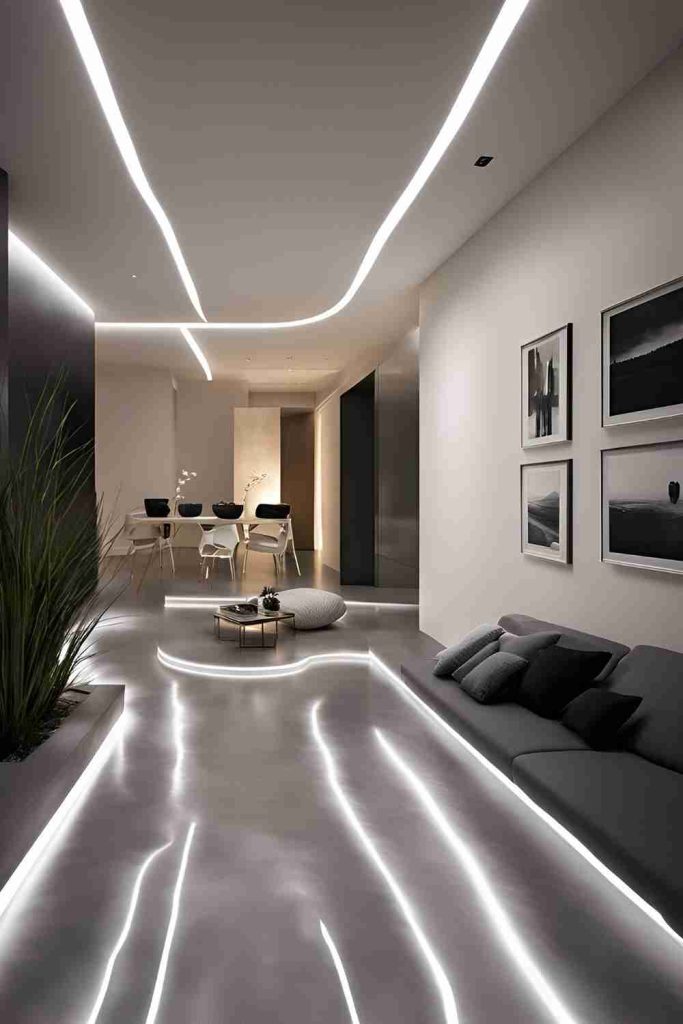
This technique is ideal for creating ambiance in living rooms, bedrooms, or entertainment areas. The LED lights will add a subtle glow, perfect for creating a cozy atmosphere at night.
17. Distressed Concrete for an Industrial Look
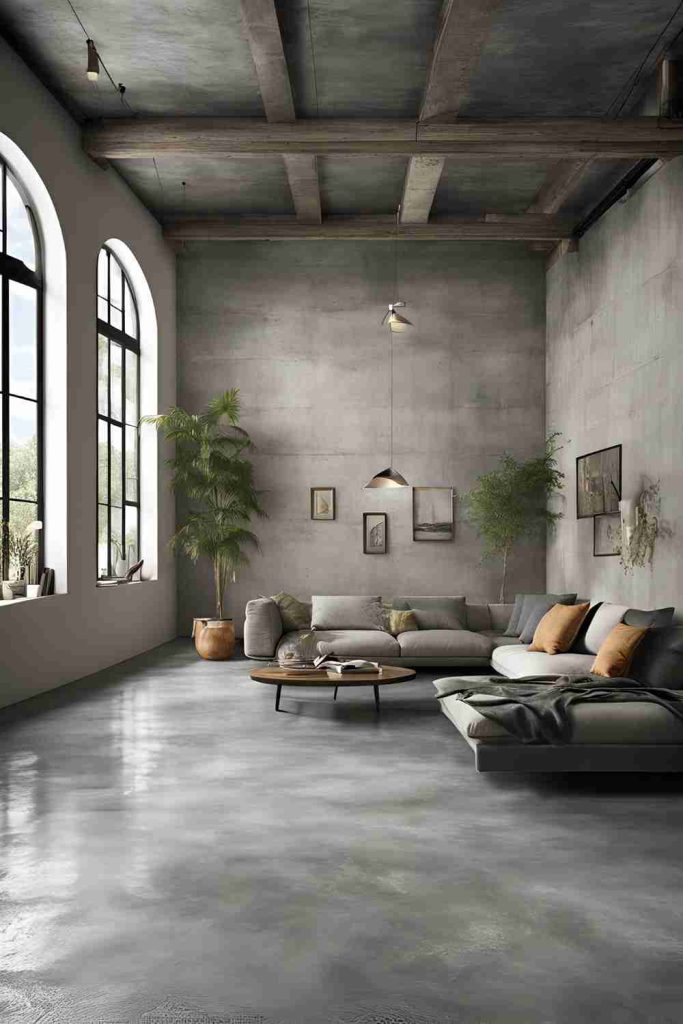
If you love the raw, unfinished look of industrial design, distressed concrete floors will help you achieve that edgy aesthetic. This technique gives your concrete floors a weathered, worn appearance that adds character to any space. You can create this effect by intentionally creating imperfections like cracks, chips, and stains to make your floors look aged and rustic.
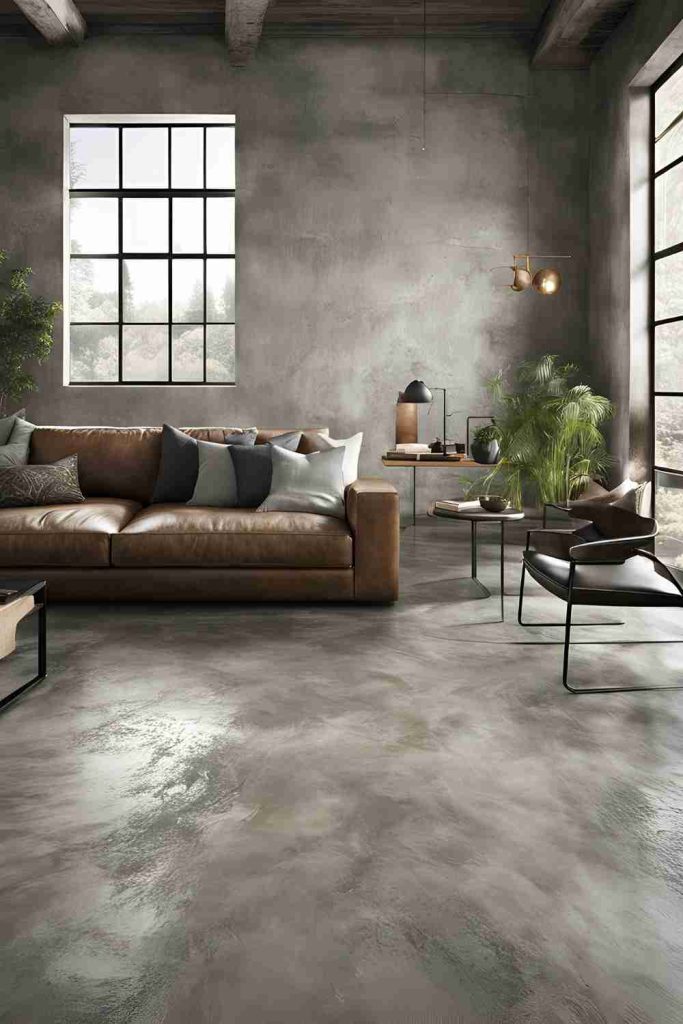
To distress your concrete, use tools like chisels and grinders to create scratches, cracks, and gouges in the surface. You can also apply a stain to darken certain areas and give the floor an even more weathered look. Once finished, seal the floor to lock in the distressed effect.
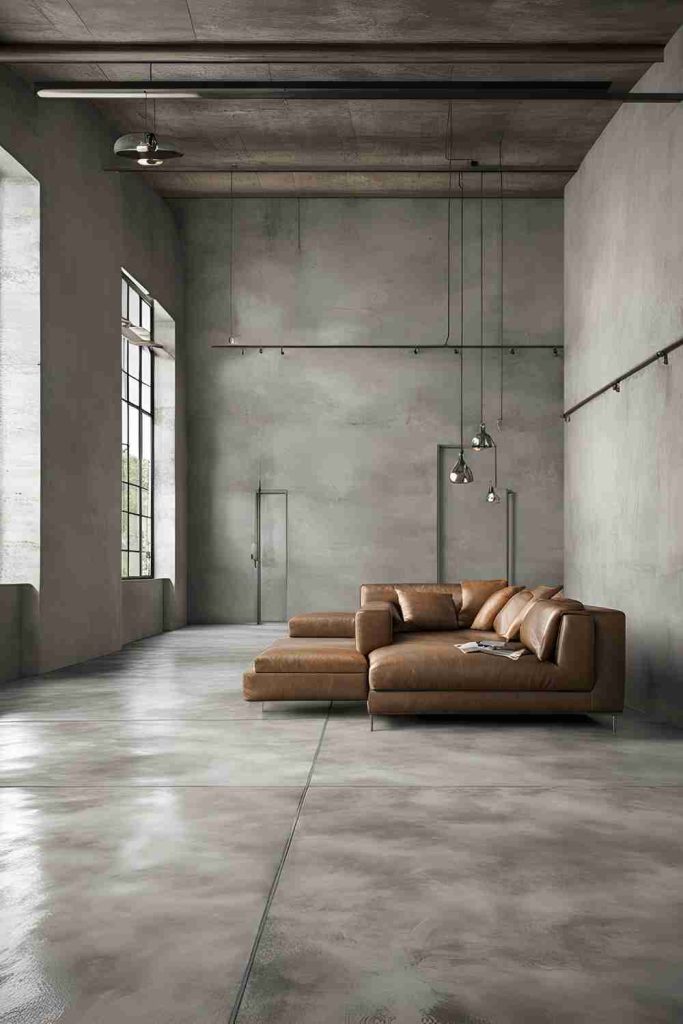
Distressed concrete floors are perfect for lofts, warehouses, or any space that calls for an industrial-chic style.
18. Concrete Floors with Artistic Acid Etching
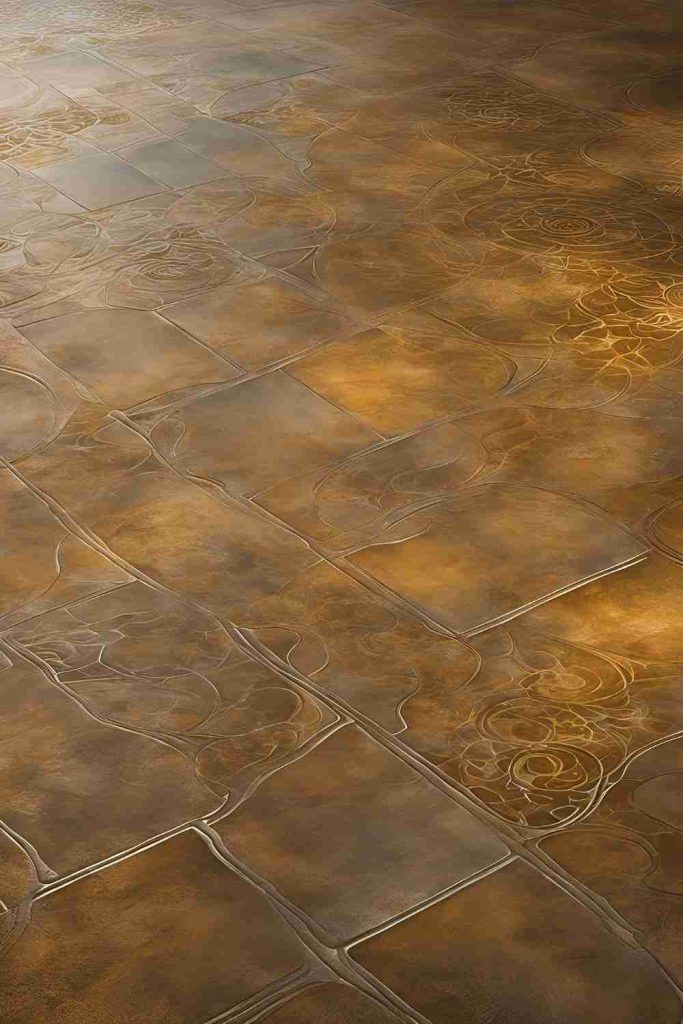
For an intricate, artistic touch, try acid etching your concrete floor. This technique involves using acid-based solutions to create beautiful, etched designs on the surface of the concrete. The etching process reacts with the minerals in the concrete to reveal subtle, abstract patterns that can’t be replicated with other methods.
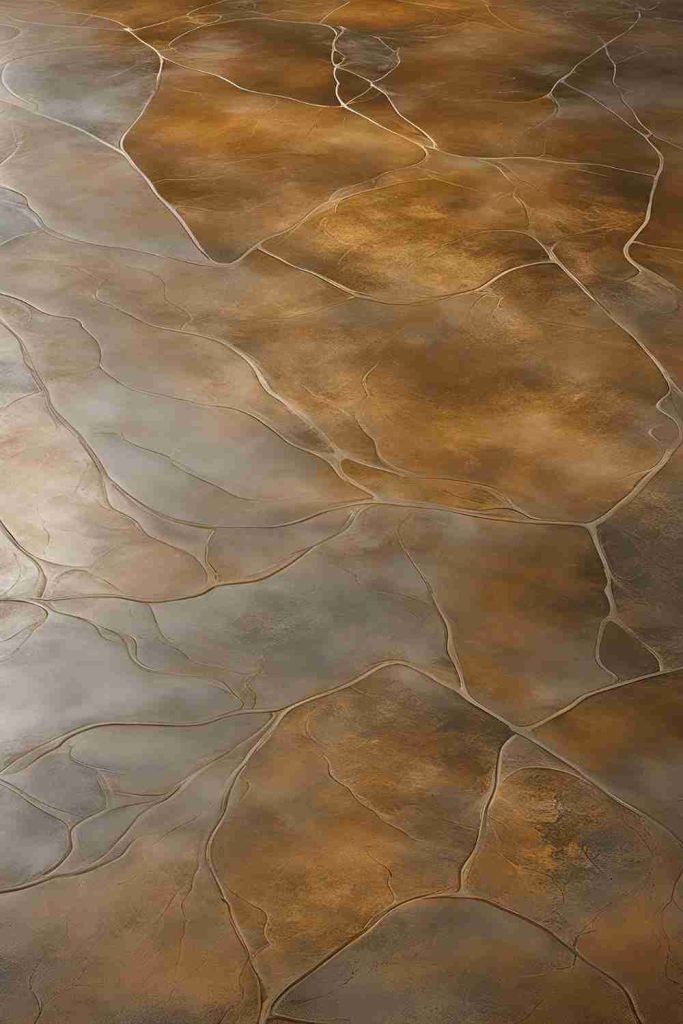
To acid-etch your concrete floor, apply an acid solution to the surface and allow it to sit for a while. The acid will etch the concrete in unique ways, leaving behind a beautiful pattern or texture. You can create geometric shapes, borders, or even custom designs for a completely personalized floor.

This technique is perfect for homeowners who want a custom, one-of-a-kind floor that serves as an artistic statement in their home.
19. DIY Concrete Floors with Rugs Embedded
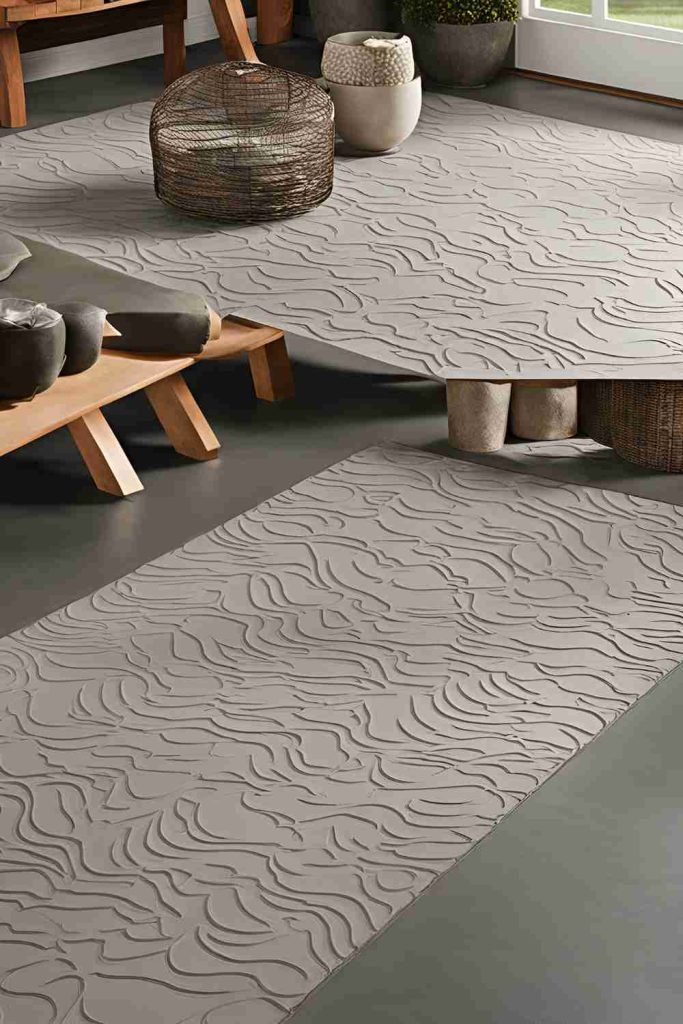
Imagine having a permanent rug design embedded into your concrete floor. This innovative technique allows you to stamp, paint, or create textured patterns directly into the floor, giving the illusion of a rug or mat without the hassle of cleaning and upkeep.
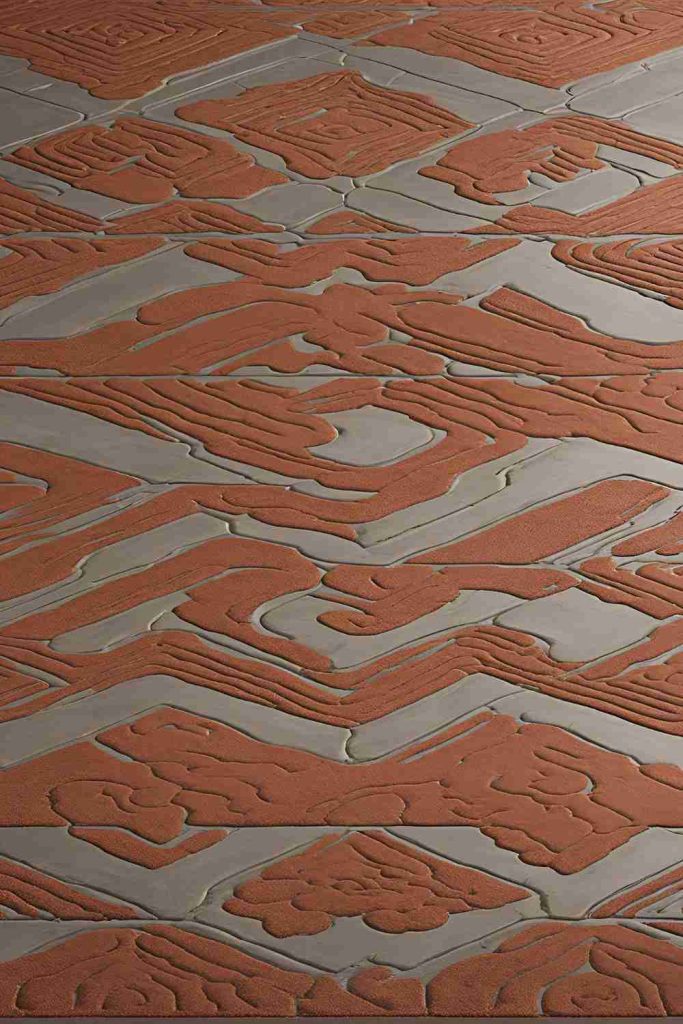
To create embedded rugs, decide on the design you want, whether it’s a geometric pattern, a floral motif, or something abstract. Once your concrete is poured and wet, use stamps or stencils to imprint the rug design. You can even use contrasting colors or stains to highlight specific areas.
This method works well in entryways, living rooms, and dining areas where a “rug” can add comfort and style to the space without the need for maintenance.
20. Concrete Floors with Bold Stripes
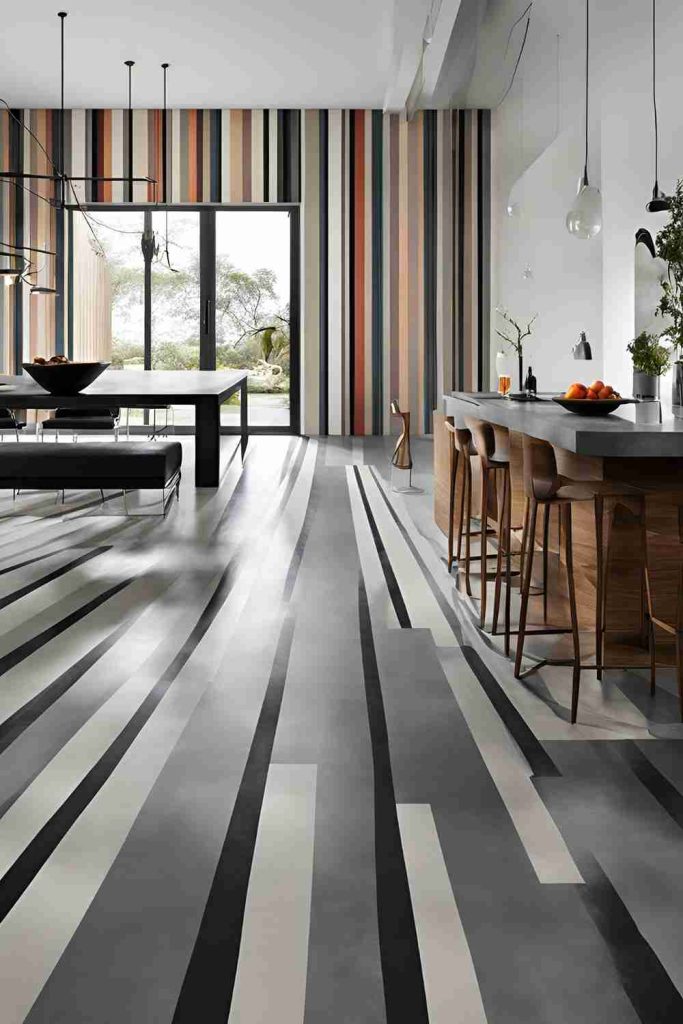
Bold, striking stripes on your concrete floor can instantly add energy to a space. This design works best in modern, contemporary interiors where you want the floor to become a key focal point. You can choose between thick or thin stripes, depending on the statement you want to make, and use contrasting colors for extra drama.
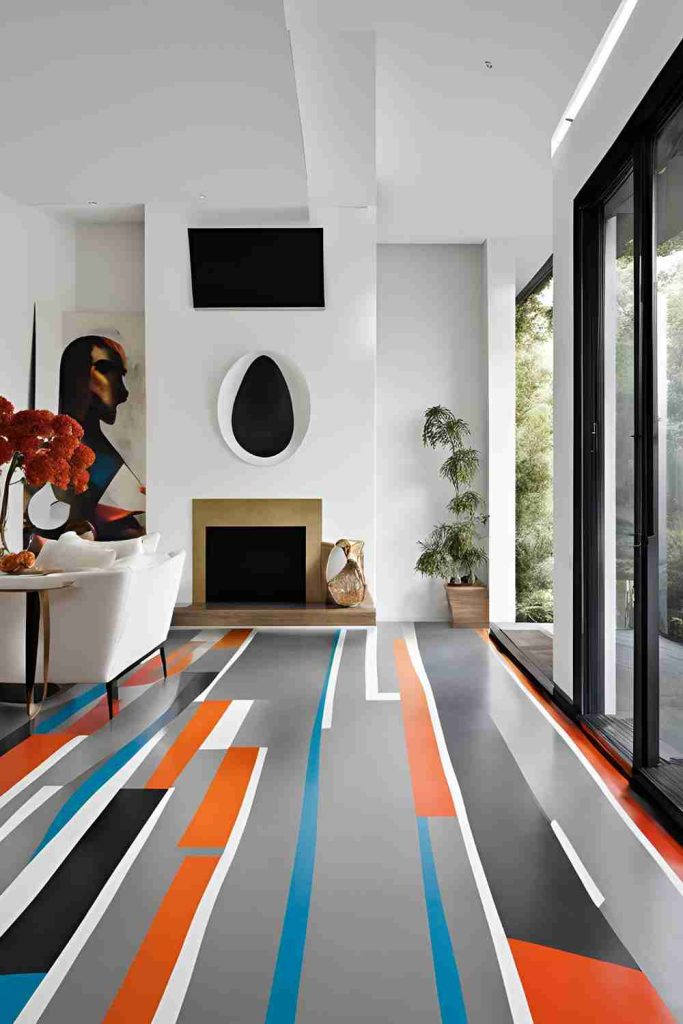
To create bold stripes, start by taping off the areas where you want the stripes to appear. Use a high-quality concrete paint or stain to fill in the spaces, and then carefully remove the tape before the paint dries. You can alternate between light and dark colors for an eye-catching effect.
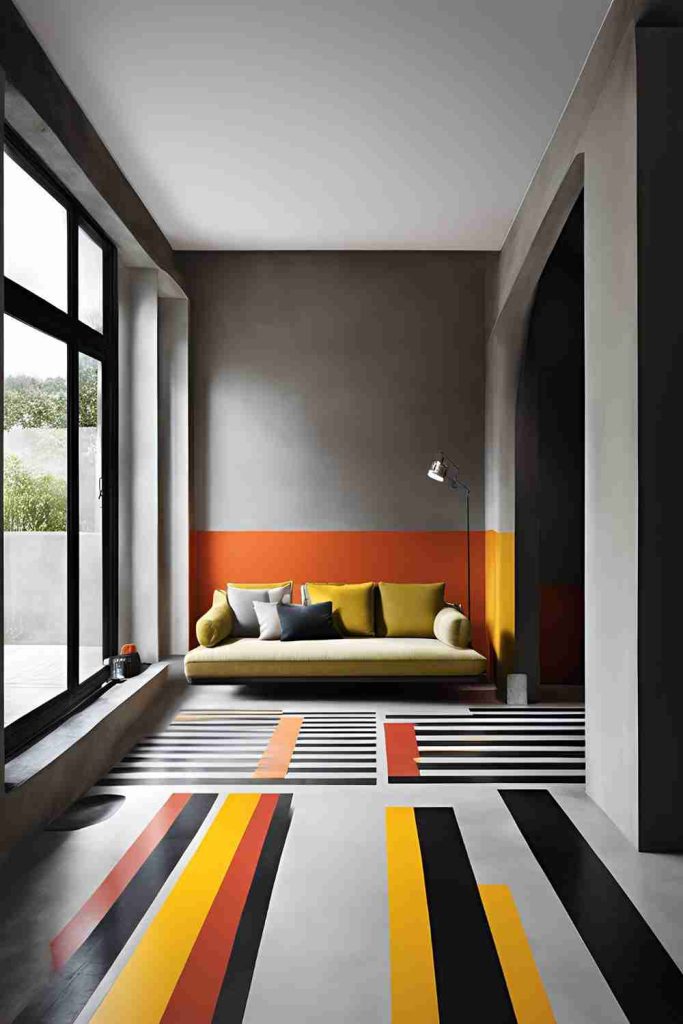
Striped concrete floors are great for making a statement in home offices, kitchens, and even bathrooms. They’re versatile and fun, giving any room a modern edge.
21. DIY Seamless Concrete Floors
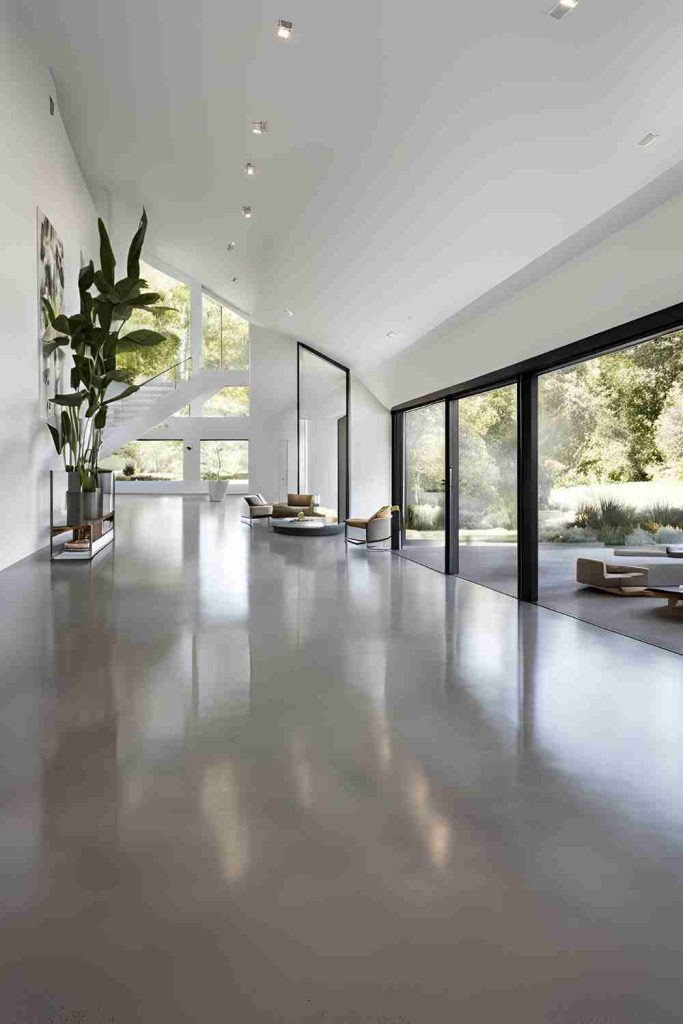
Seamless concrete floors are sleek, minimalist, and timeless. This type of floor has no joints, seams, or grout lines, creating a smooth, uninterrupted surface that’s perfect for contemporary spaces. Seamless concrete is highly durable, easy to clean, and visually striking, making it an excellent choice for modern homes.
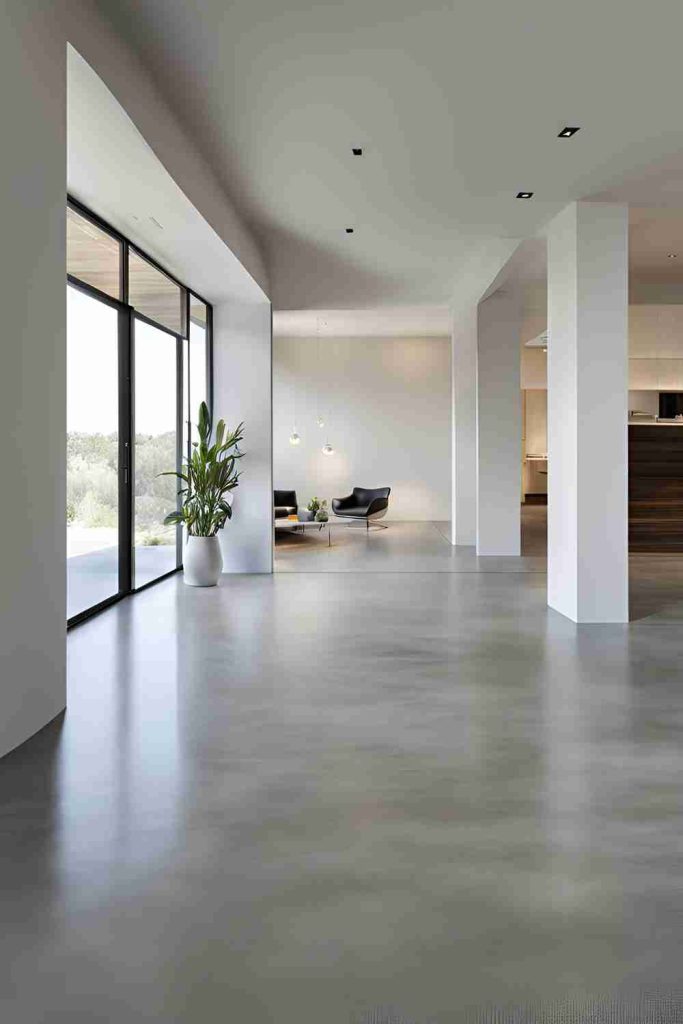
To create a seamless floor, mix and pour your concrete carefully to avoid any air pockets or imperfections. Once poured, use a trowel to smooth out the surface, ensuring there are no seams or joints visible. A seamless floor works especially well when combined with polished or stained finishes for added elegance.
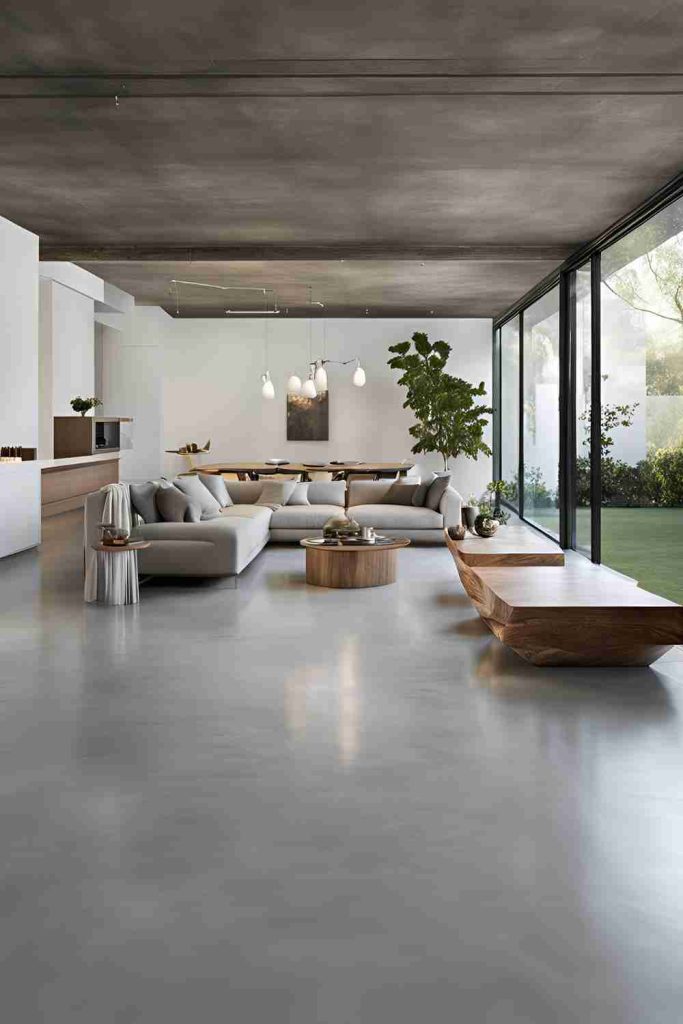
This style is perfect for bathrooms, living rooms, or even commercial spaces like galleries or showrooms. It creates a clean, professional look that complements any décor style.
22. Decorative Concrete Floors for Outdoor Spaces
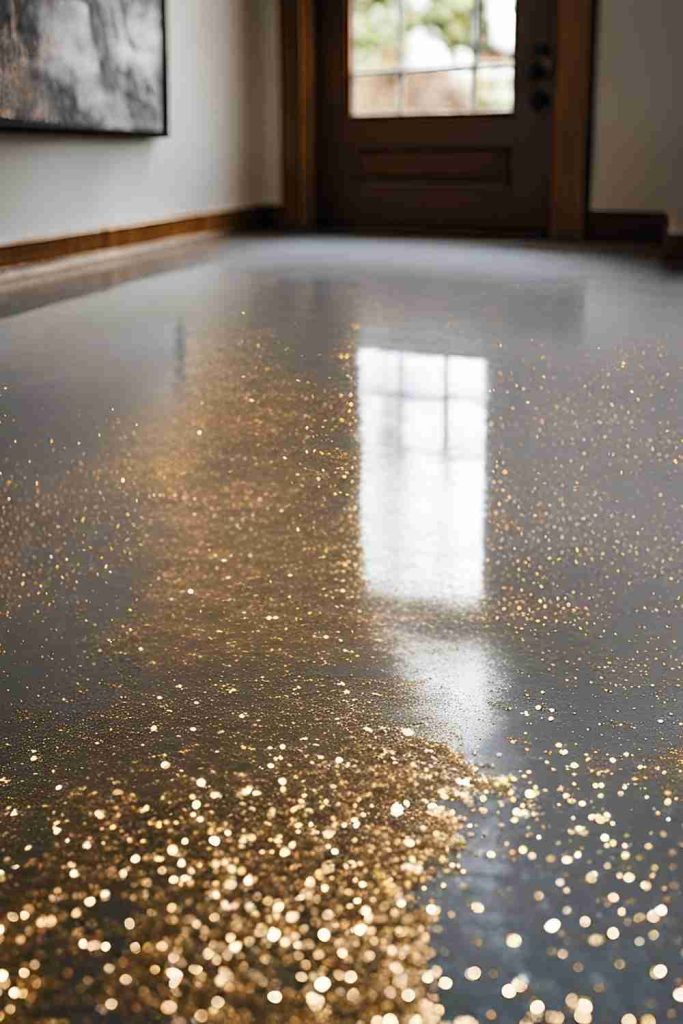
Outdoor living spaces are just as deserving of attention to detail as indoor areas, and decorative concrete floors are a great way to elevate your outdoor aesthetic. Whether you’re working with a patio, porch, or pool area, decorative concrete options like stamping, staining, or painting will help you create an outdoor oasis.
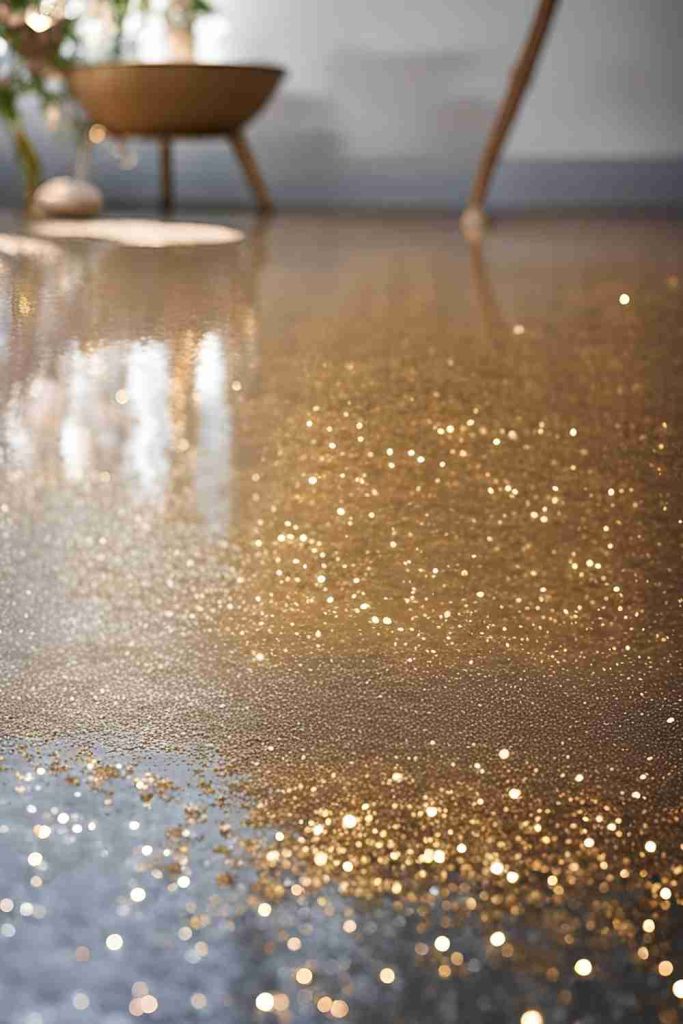
To get started, decide on the look you want for your outdoor space. Concrete stamps can mimic the appearance of stone, wood, or brick, while stains can create rich, vibrant colors. Once the concrete cures, apply a sealer to protect it from the elements.
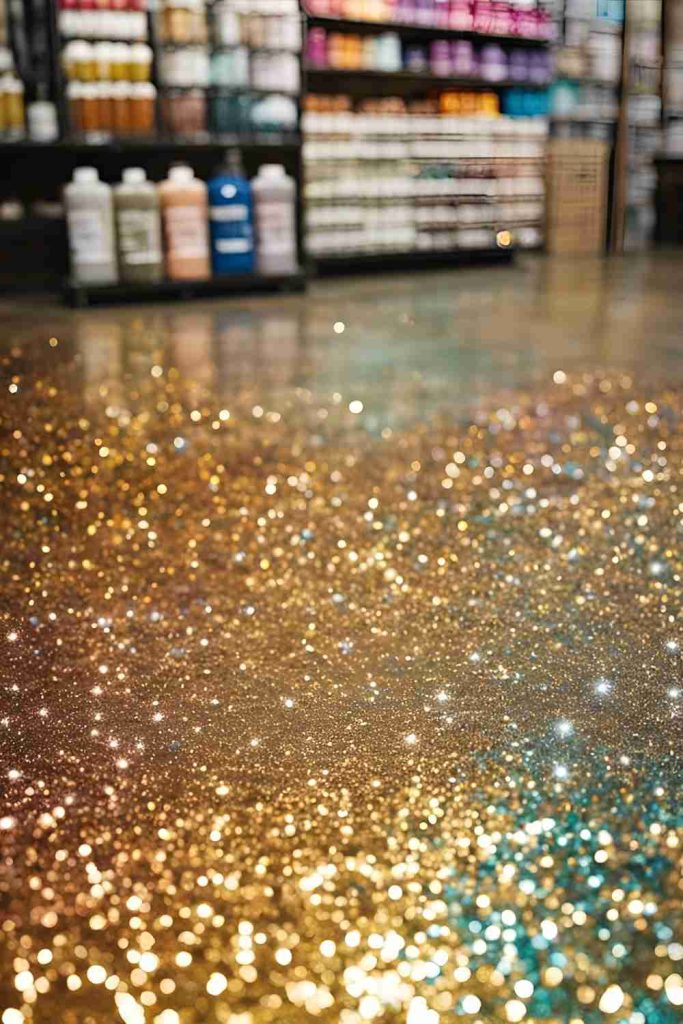
Decorative concrete floors in outdoor spaces add a beautiful, functional touch that’s perfect for entertaining, relaxing, or enjoying the outdoors in style.
23. Concrete Floors with Glitter Additives
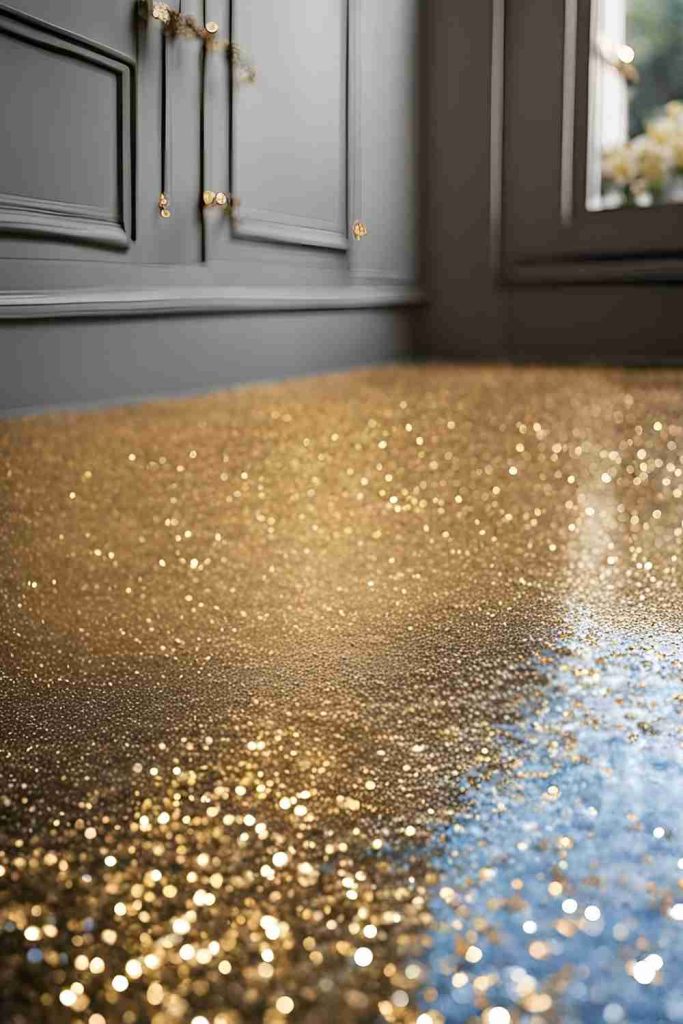
Add a little sparkle to your concrete floors with glitter additives. This fun and creative technique allows you to mix glitter into your concrete stain or epoxy resin for a shimmering, magical effect. Whether you want a subtle touch or an all-out glitter explosion, this option will give your floors a glamorous and eye-catching appearance.
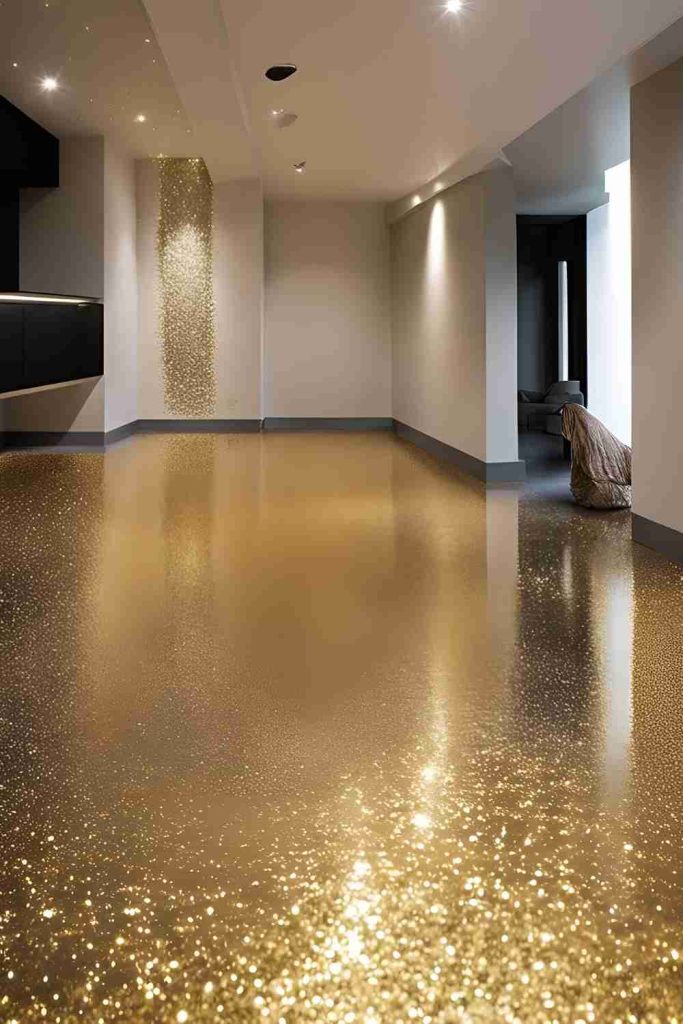
To achieve this look, simply mix the glitter with your chosen concrete finish, such as epoxy or stain, and apply it to the floor. You can even experiment with different glitter colors to match the theme of your room.
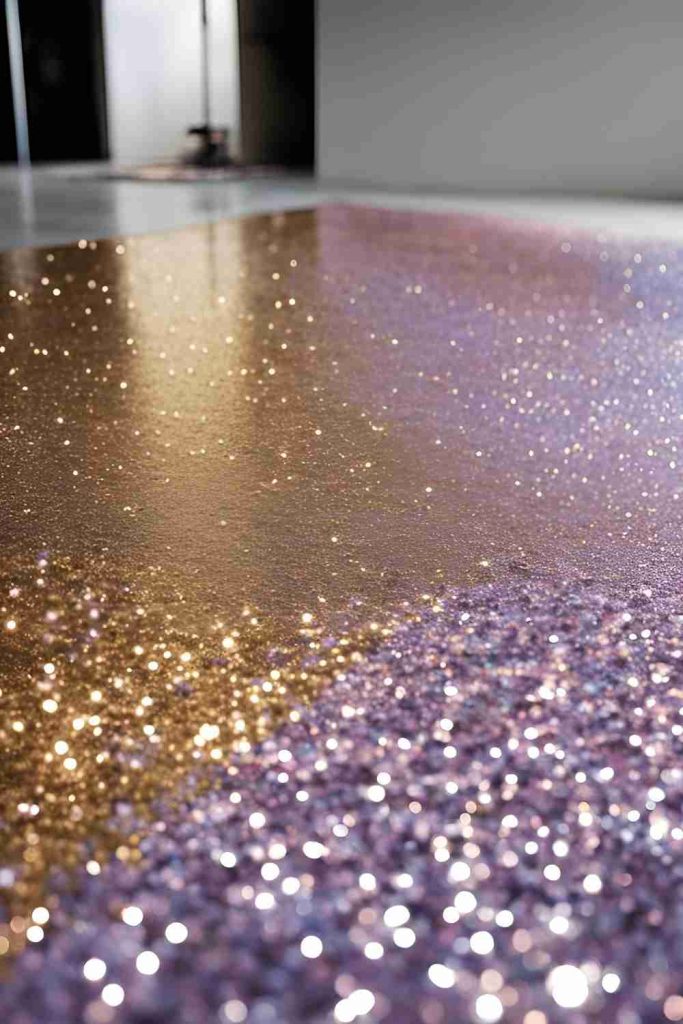
Glitter-infused concrete floors are perfect for bedrooms, home offices, or any space where you want to bring in some extra sparkle and fun.
24. Ombre Stained Concrete Floors
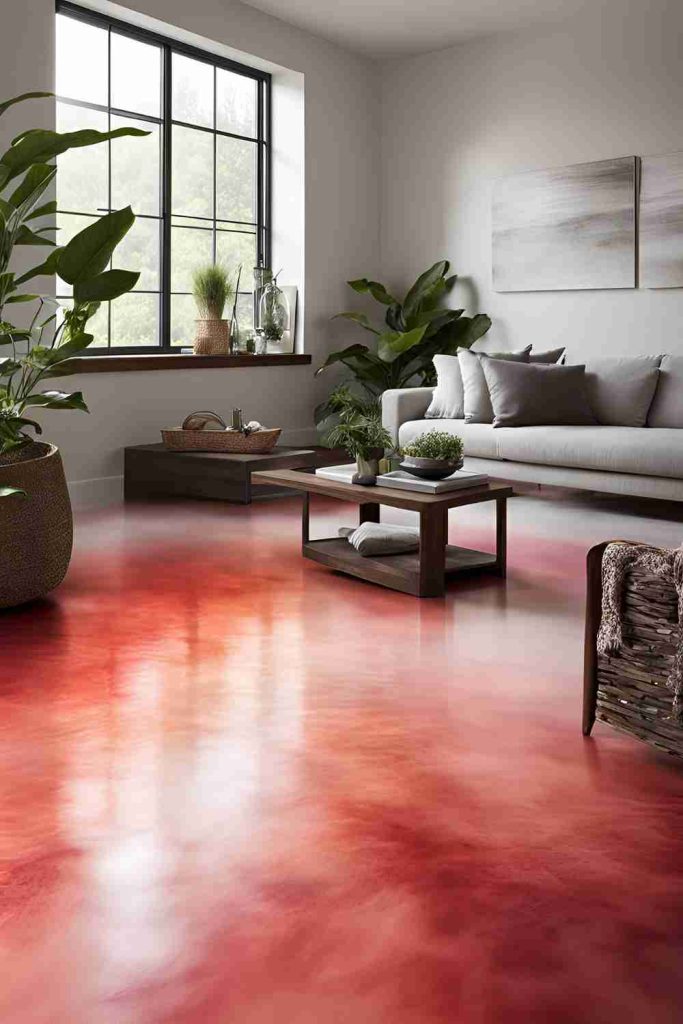
Ombre stained concrete floors are a trendy and sophisticated way to add depth and movement to your space. The ombre effect blends two or more colors, fading from light to dark or transitioning between complementary hues. This soft gradient of color creates a serene and visually pleasing atmosphere, perfect for living rooms, bedrooms, or even entryways.
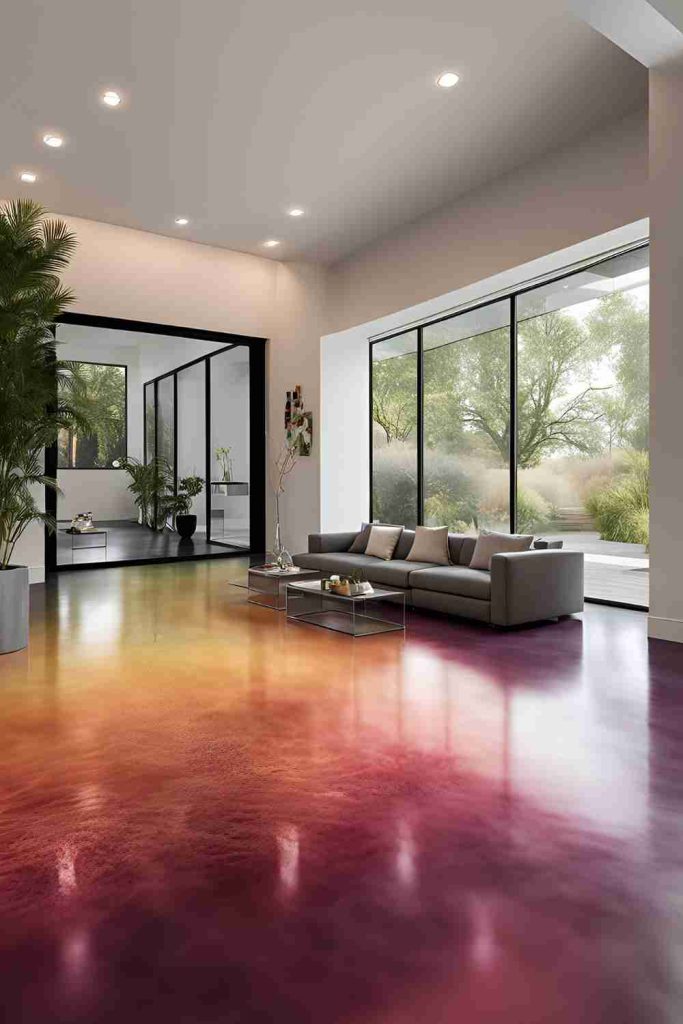
To create an ombre effect, apply the first color at one end of the floor and gradually work your way across, blending in the second color as you go. The key is to work quickly and blend the stains before they dry to achieve a smooth transition.
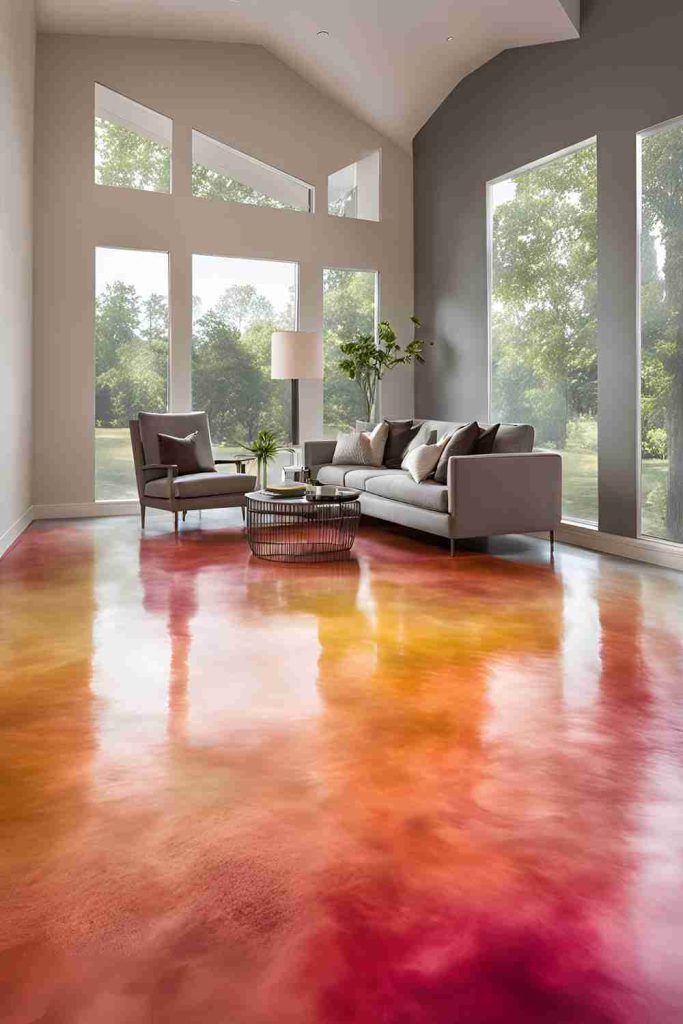
The ombre look is particularly stunning when used in larger spaces and adds a touch of elegance without overwhelming the room.
25. Concrete Floors with Hand-Painted Borders
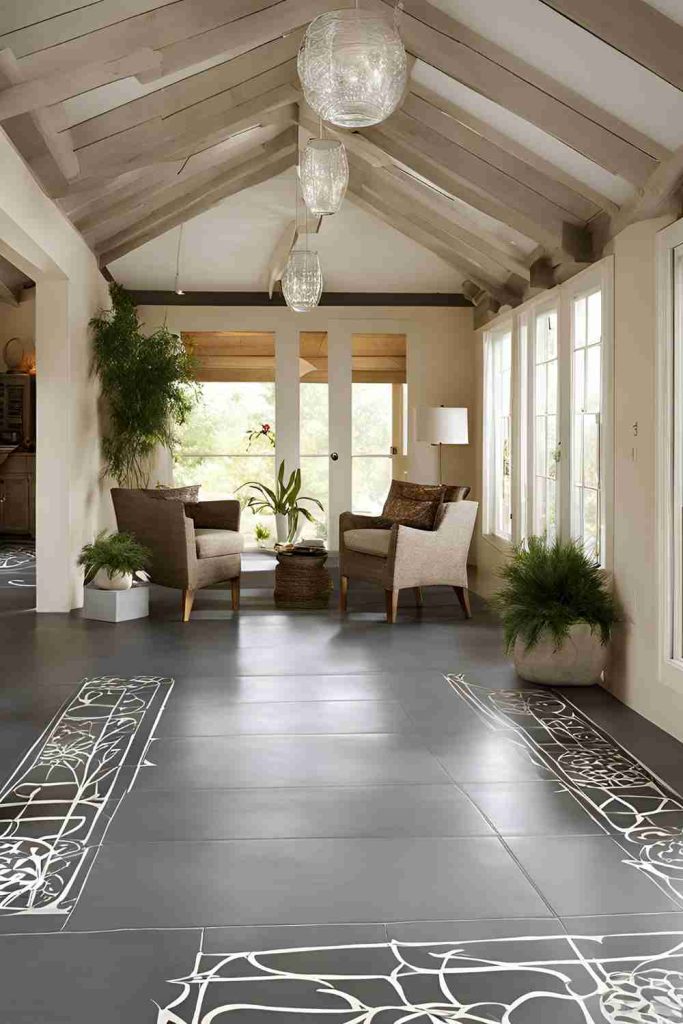
Hand-painted borders add a personal and artistic touch to your concrete floors. Whether you choose floral motifs, abstract designs, or simple lines, painted borders are a great way to frame your space and add visual interest. This DIY method allows you to customize your floor in a way that complements your room’s style.
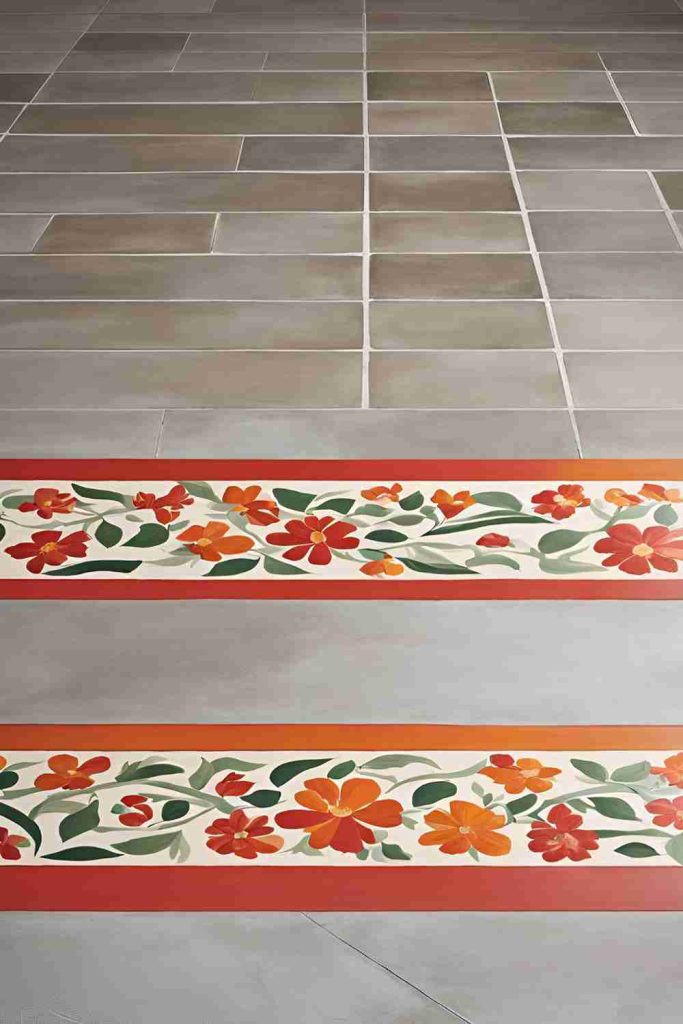
To create hand-painted borders, use painter’s tape to mark off the area you want to paint. Then, use a high-quality paint suitable for concrete to add your desired design. Once finished, seal the floor to ensure the paint stays intact.
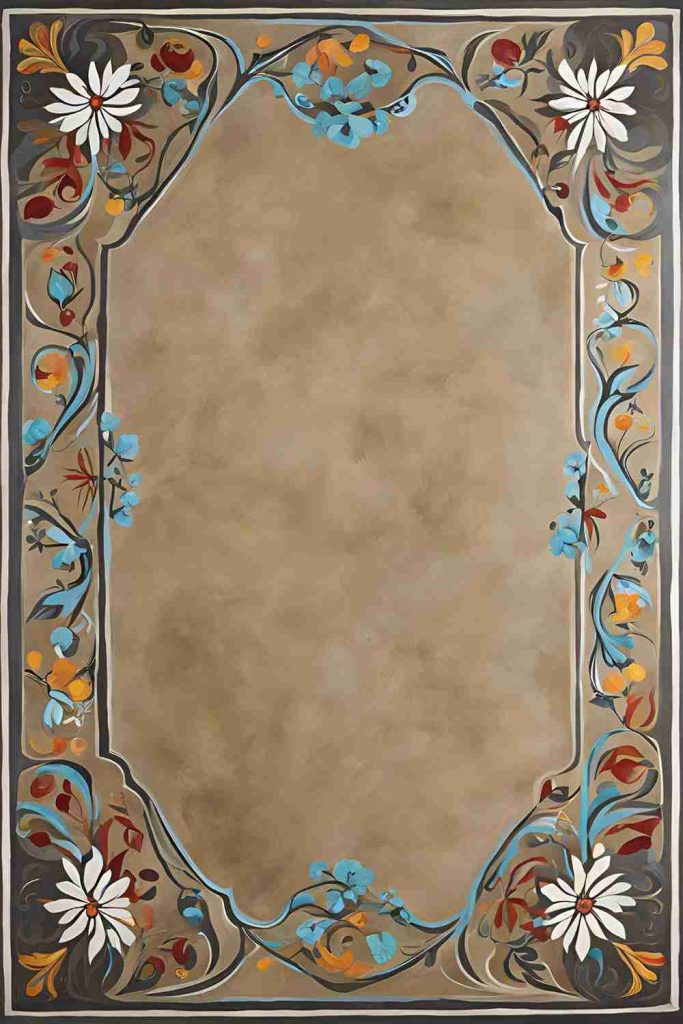
Hand-painted borders are perfect for creating custom designs in kitchens, bathrooms, or living rooms.
26. DIY Concrete Floors with Textured Rollers
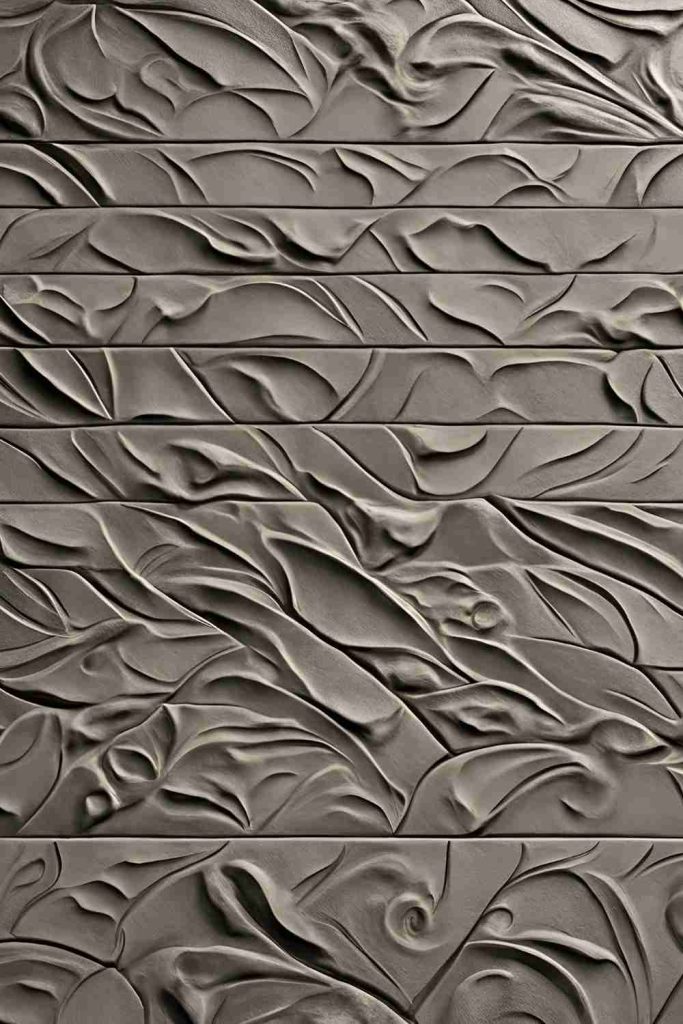
Textured rollers are a fast and effective way to create intricate patterns and designs on your concrete floor. Using a roller with a unique texture, you can add a variety of designs, such as cobblestones, brick patterns, or even custom textures. This technique is great for homeowners who want a professional finish with minimal effort.
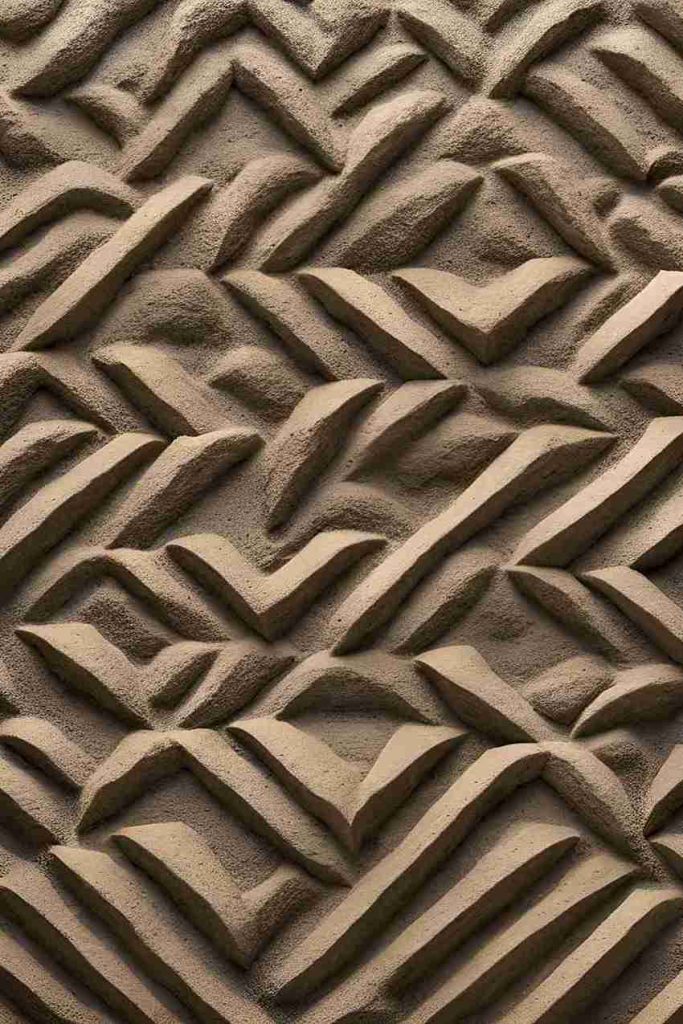
To use textured rollers, simply pour the concrete and then roll the design over the surface while it’s still wet. You can experiment with different textures to create the perfect look for your room.
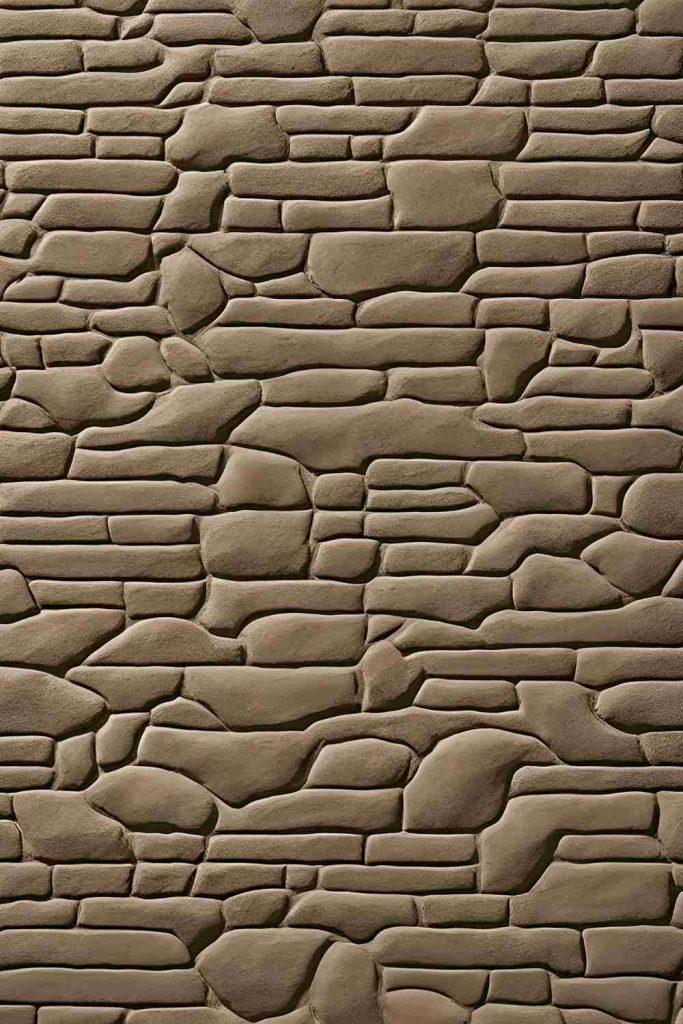
Textured roller designs work well in both indoor and outdoor spaces, including patios, entryways, and even kitchens.
27. Minimalist Matte-Finish Concrete Floors
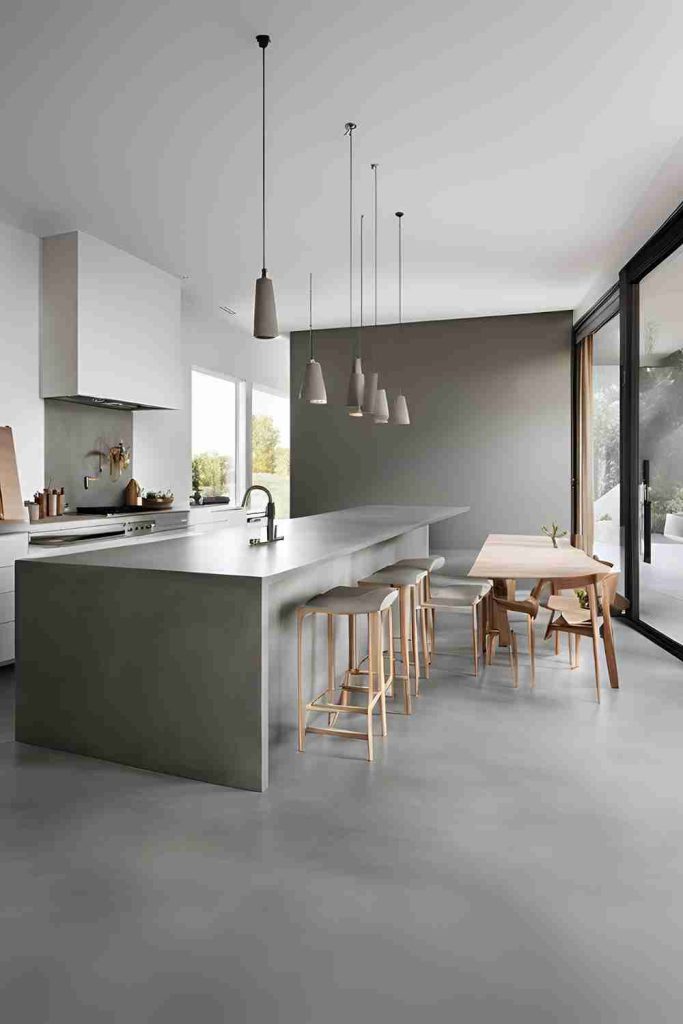
For a sleek, modern look, consider opting for a matte finish on your concrete floors. Matte-finish concrete has a soft, understated elegance that suits minimalist and contemporary interiors. This finish is ideal for spaces that require a calm, neutral tone without the shine of polished or glossy surfaces.
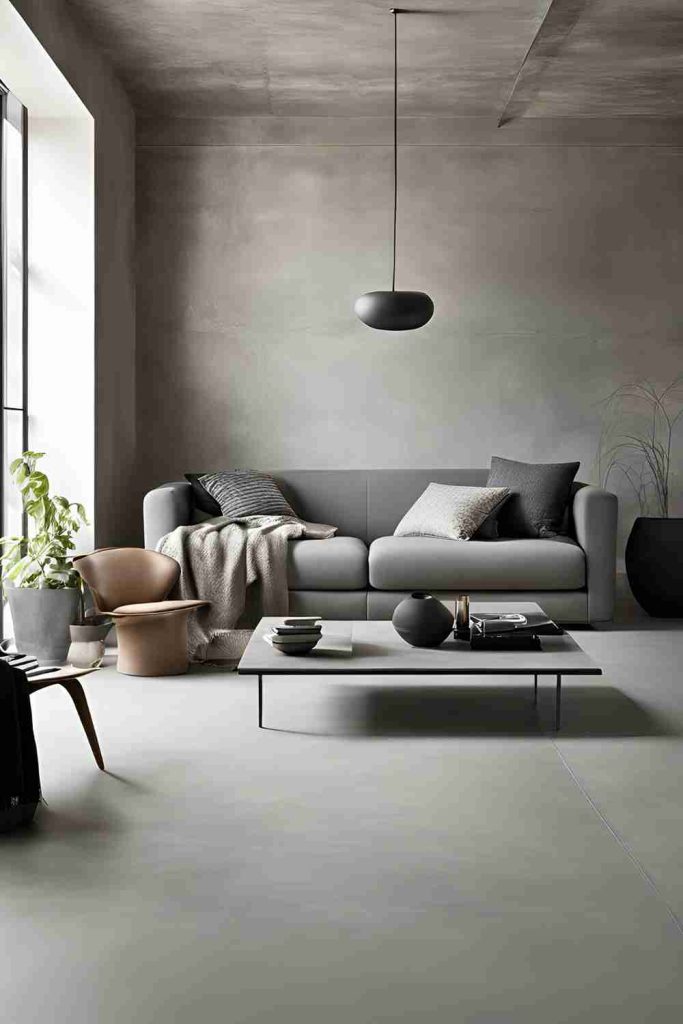
To achieve a matte finish, avoid polishing the concrete to a high gloss. Instead, finish it with a matte sealer or leave the surface as is. The result is a sophisticated, smooth floor that complements modern décor styles.
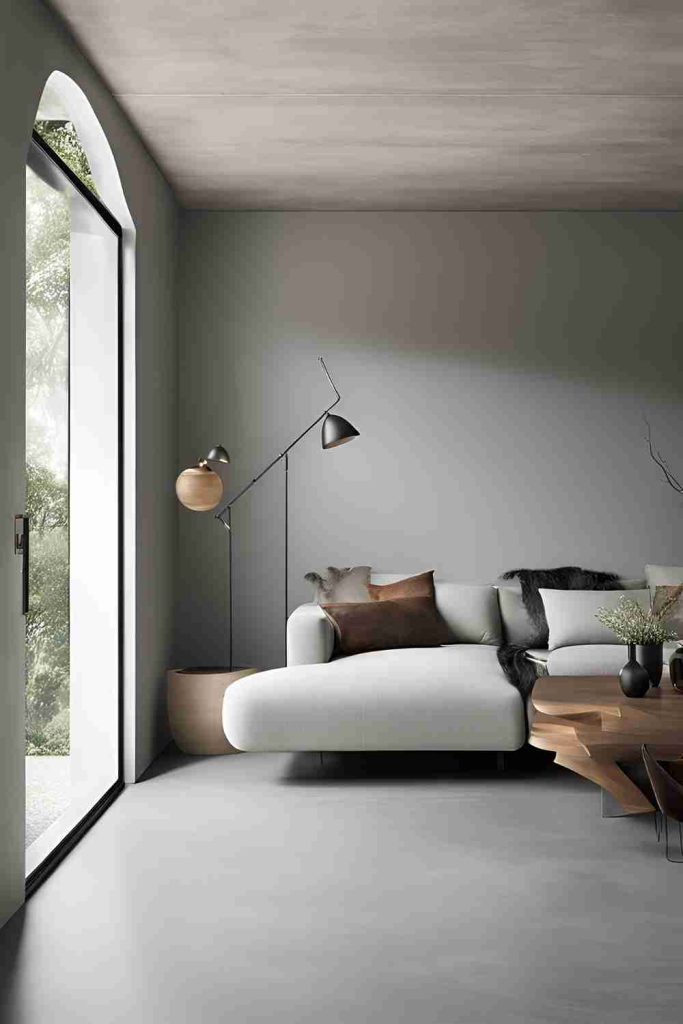
Matte-finish floors are perfect for minimalist homes, especially in spaces like bedrooms, home offices, or living areas.
Conclusion
There you have it—27 unique and inspiring DIY concrete floor ideas that will transform your home into a stylish, functional space. Whether you’re aiming for a polished, sleek look or a more rustic, textured finish, there’s a concrete flooring option that suits your style, space, and budget.
Concrete floors are versatile, durable, and budget-friendly, making them an excellent choice for anyone looking to update their home. With these creative ideas, you can add personality and charm to any room, from your kitchen to your back porch or even your bathroom. The possibilities are endless, and the results will speak for themselves.
Are you ready to get started on your own concrete floor makeover? Let us know which idea inspires you the most, and feel free to share your DIY journey in the comments!
